|
Donald Trump believes that if he was still President the war in Ukraine would be much different, and may not have occurred at all. He is certainly entitled to his opinion. Trump’s interactions with Ukraine while he was in office, and his relations to Vladimir Putin tell a different story. Trump has not been shy about expressing his opinions since the outbreak of the war in Ukraine. So, it is not difficult to conjecture about the war in Ukraine under a Trump Administration. Donald Trump’s views on the end of the Afghanistan war, his interactions with Ukrainian President Zelensky, his lack of support for NATO, and his relationship to Putin, tell a very different story than what is actually unfolding. Withdrawal from Afghanistan: Donald Trump and Republican leaders have been crowing in recent weeks that President Biden's “abrupt” end to the Afghanistan War showed American weakness and emboldened Putin to invade Ukraine. There is no evidence of this, and is ludicrous coming from Donald Trump. The truth is, the Trump Administration signed an agreement with the Taliban on February 29, 2020 for the complete withdrawal of American troops from Afghanistan by May 2021. This agreement achieved no meaningful commitments from the Taliban, and essentially cut out the U.S. supported Afghanistan Government in Kabul. Before the Russian invasion of Ukraine, Trump was patting himself on the back for this agreement. In one Twitter post he stated “I started the process, all the troops are coming home, they (Biden) couldn’t stop the process”. On an April 18, 2021 post to his website, Trump stated “Getting out of Afghanistan is a wonderful and positive thing to do. I planned to withdraw on May 1”. He went further by criticizing President Biden for waiting until September 11, 2021 to withdraw the troops from Afghanistan. Putin has been planning to invade Ukraine and bring it under his orbit for many years. He showed his hand with the annexation of the Crimean Peninsula in 2014. Later that same year, Russian-backed separatists seized the Donbas region in eastern Ukraine by force. Even though the American withdrawal from Afghanistan was a botched affair, it had nothing to do with Putin’s decision to invade Ukraine. Ostensibly Trump would have executed the withdrawal from Afghanistan with precision, leaving no doubt about the military might of the United States, and giving pause to every world leader who opposed that might. Donald Trump’s Relationship to Ukraine: Donald Trump’s relationship to Ukraine during his Presidency can best be described as scandalous. Trump attempted to get the government of Ukraine to open an investigation into the activities of candidate Joe Biden’s son, Hunter. During a phone call in 2019 to Ukraine’s President Volodymyr Zelensky, Donald Trump threatened to withhold nearly $400 million in Congressionally authorized military aid if he didn’t do Trump this favor. Trump also promised President Zelensky the honor of a White House visit if other favors were delivered. These quid pro quos damaged the prestige of the White House, and did little to solidify U.S-Ukraine relations. This appalling episode made President Zelensky look foolish, made Ukraine look like a tool of the West, and led to the first impeachment of Donald Trump. It is hard to believe that if Donald Trump was still President he would be Ukraine’s champion. Afterall, what would be in it for him? Donald Trump’s Relationship to Vladimir Putin: As Russian tanks and troops amassed on the borders of Ukraine, Donald Trump called Putin a genius, very smart, and savvy. Once the invasion began, Trump called the Biden Administration weak, and member states of NATO “not so smart”. But in recent days, as the world turned against Putin and his invasion of Ukraine, Trump has done an about-face. Now “the Russian attack on Ukraine is appalling. It is an outrage, and an atrocity that should never have been allowed to occur”. The billion-dollar question is whether a President Trump would support, or at least turn a blind eye to Putin’s invasion of Ukraine. Let’s take a look at Trump’s words and deeds while in office, as a guidepost. Russia invaded and then annexed Crimea from Ukraine in 2014. This led to international condemnation and sanctions on Russia. It also led to the expulsion of Russia from the Group of Eight (G8), an inter-governmental political forum which includes France, Germany, Italy, Japan, the United Kingdom, Canada, and the United States. During a G7 meeting in 2018, Trump called for Russia to be reinstated, and questioned leaders as to why they sided with Ukraine over Russia. Afterall, Trump told the other leaders, “Ukraine is one of the most corrupt countries in the world”. At a summit meeting with Vladimir Putin in Helsinki in the summer of 2018, Trump sided with Russia against his own U.S. intelligence agencies. At the summit, Trump disavowed the findings of U.S. intelligence agencies which had concluded that Russia had indeed interfered in the 2016 elections. Trump stated during a press conference that he believed Putin, who had told him that Russia had not meddled in the U.S. elections. Does this sound like a leader who would back Ukraine over Russia? The NATO Alliance: The member states of NATO have come together swiftly and decisively to aid Ukraine against Russian aggression. We haven’t witnessed this much unity in NATO since the attacks on 9/11. The Swedes and Fins are considering joining NATO. Even Germany has been shaken from its pacifist stance to dramatically increase military spending and supply Ukraine with defensive weapons and supplies. Of course, Donald Trump takes credit for all of this. He stated on February 28 “There would be no NATO if I didn’t act strongly and swiftly”. But according to recent reports in The Washington Post and The New York Times, Trump told his senior administration officials on several occasions that he wanted to withdraw from the NATO alliance. In 2020 Trump ordered the withdrawal of about a third of U.S. troops stationed in Germany. If Trump had won the 2020 election it is possible that he would have followed through on his threats to withdraw from NATO. That would have severely weakened and undermined the alliance and played right into the hands of Vladimir Putin. According to Retired Admiral James G. Stavrids, the former Supreme Allied Commander of NATO, an American withdrawal from NATO would be “a geopolitical mistake of epic proportion”. What Trump doesn’t realize, is that his threats to withdraw from NATO undermined the alliance and actually emboldened Putin. What would Ukraine’s fate be if not for NATO? It would end up being annexed by Russia, and Russia would be on its way to recreating the U.S.S.R. President Biden has taken the lead on sanctioning Russia, providing military aid to Ukraine, and uniting the NATO alliance. Donald Trump is using revisionism and twisted logic to paint himself as a friend to Ukraine and foe to Vladimir Putin. Just as with Vladimir Putin’s tortured justifications for invading Ukraine, the American people and the world will not be fooled. You can draw your own conclusions about the fate of Ukraine, and indeed the fate of the world, if Donald Trump was still President. But I for one am glad that Joe Biden is our President during this time of international conflict. The world would not be a safer place if one more leader of questionable emotional stability, had access to nuclear weapons. If you enjoy reading this type of commentary please subscribe to my blog and tell a friend. You will receive an email notification when new blogs are posted. The email will come from the site’s email: armchairamerican1776 @gmail.com.
Thanks, Armchair American
0 Comments
On February 25, 2022 Russia’s President Vladimir Putin unleashed the largest military operation in Europe since World War II. Putin’s unprovoked invasion of the sovereign country of Ukraine shows what lengths he will go to in an attempt to rectify grievances, both real and imagined. Attacks on civilian targets in Ukraine show his disdain for human life. The shelling of nuclear installations demonstrates Putin’s disregard for the norms of a civilized nation, not to mention his indifference to unleashing toxic materials into the environment. The arrest of thousands of his fellow citizens who oppose him, and the suppression of the free press and social media within Russia, show his distrust and disdain for his own citizens. Putin’s initiation of an illegal war in the face of worldwide condemnation, shows his indifference to the international community. Putin will stop at nothing to achieve his aims, as demonstrated by his threat to use nuclear weapons against those who oppose him. For the sake of Ukraine, peace in Europe, and respect for democratic principles around the world, Putin must be stopped. What Does Putin Hope to Gain: Putin has admitted to Western leaders that he will stop at nothing to achieve his goals in Ukraine, and the West should believe him. So, what are his goals? Simply put, to prevent Ukraine from ever joining any Western alliance which opposes Russia. Putin will not stop until he has overthrown Ukraine’s government headed by democratically elected President Volodymyr Zelensky, and replaced it with a puppet regime. Ultimately Putin hopes to annex the entire country of Ukraine, as he did with the Crimea in 2014, which is now part of Russia. What Motivated Putin to Invade Ukraine: No one knows for sure what motivated Putin to invade his peaceful neighbor, which poses no threat to Russia. By all accounts, Putin has become isolated and paranoid in recent years, and this has only been compounded by the COVID pandemic. Putin claims that Russia’s invasion was to free Ukraine from oppression and “cleansed of the Nazis”, and to bring to justice “those who committed numerous bloody crimes against civilians”. This is nonsensical of course. You would think that the former KBG agent could come with something better than that. Many observers point to three major motivations behind Putin’s military assault on Ukraine: grievances stemming from the collapse of the Soviet Union, unchecked expansion by NATO resulting in security concerns, and protection of Russia’s energy markets (https://www.nytimes.com/2019/06/25/magazine/russia-united-states-world-politics.html). Grievances: Since the collapse of the Soviet Union in 1991, Putin has watched Russia’s prestige and influence dwindle on the global stage. Putin described the collapse of the Soviet Union as “the biggest geopolitical catastrophe of the century”. To Putin, the two world wars and the Holocaust were lesser events. Russia expected to be treated as an equal partner in world affairs with the United States, with the right to retain influence over countries in the former Soviet Bloc. But with Russia in chaos, this was not to be. Security Issues: Putin claims that the United States reneged on its pledge not to expand NATO (North Atlantic Treaty Organization) to countries bordering Russia. This pledge was never made (https://www.pbs.org/newshour/world/why-nato-and-ukraine-are-a-flash-point-with-russia-30-after-the-end-of-the-cold-war). Russia has no right to dictate NATO’s membership. According to its chapter, NATO membership is open to “any other European state in a position to further the principles of this Treaty and to contribute to the security of the North Atlantic area” (https://www.nato.int/cps/en/natolive/official_texts_17120.htm). Since the end of the cold war, fourteen former Soviet Bloc countries have joined NATO, including Estonia, Latvia and Lithuania, which have borders with Russia. Ukraine is not a member of NATO, but the two entities did enter into a Comprehensive Assistance Package in 2016 (https://www.nato.int/nato_static_fl2014/assets/pdf/pdf_2016_09/20160920_160920-compreh-ass-package-ukra.pdf). NATO has made overtures to both Georgia and Ukraine, which is a line in the sand for Putin. President Zelensky of Ukraine has stated his intentions to join NATO as well as the European Union. This sealed his fate in the mind of Putin. Protecting Russia’s Energy Sector: Oil and gas account for 60% of Russia’s export revenue and about 40% of its total budget expenditures. Europe is a huge natural gas market for Russia, and an inability to access this market threatens its economic security. Russia relies on a pipeline through Belarus and another through Ukraine to reach European markets. If Ukraine aligns with the West through the EU (European Union) or NATO, this threatens Russian’s pipelines and its economic stability. Petro dollars keep Putin in power, and he has calculated that the West would not threaten the flow of Russian oil and gas for fear of hurting their own economies. So far Putin’s calculation has proven correct. Actions the West Should Take: Ukraine is one of the most impoverished countries in Europe. Despite the heroism and resolve of its people, Ukraine has no chance of repelling the military might of Russia and the resolve of Vladimir Putin. NATO won’t send combat troops into Ukraine or enforce a no-fly zone over its airspace for fear of escalating the war beyond the borders of Ukraine. No one knows for sure what will motivate Putin to end the war in Ukraine peacefully. But there are some things that the West can do to hurt Putin and Russia, and hopefully bring the conflict to an end. Here are some of them:
Consequences of Inaction: If the West does not act swiftly and decisively in defense of Ukraine, there will be long term consequences to the peace and security of the world. If Putin’s illegal actions against Ukraine go unpunished, he will be emboldened. This could lead to military actions against other former Soviet Bloc countries to prevent them from aligning with the West. It could also threaten the security of NATO members Estonia, Latvia, and Lithuania which sit on Russia’s border. Putin sees the global erosion of democracy as a way to bolster and legitimize his own authoritarian moves. If Putin is allowed to succeed in Ukraine it will embolden autocrats in Belarus, Syria, Venezuela, Nicaragua, North Korea, China, and elsewhere. Vladimir Putin won’t just leave Ukraine with his tail between his legs. The war will be a prolonged and bloody affair. These are early days and if Putin has his back against the wall, the West has to be prepared for the worst. Should Ukraine be the sacrificial lamb for peace in Europe? No! This would only embolden Putin and other autocrats. It would also create a “false peace”, and the world would devolve into another “cold war”. We can’t let Putin pull the world into darkness. Russia needs to become part of the peaceful community of nations, and not hide behind the iron curtain of old. The world can only hope that the crippling economic sanctions can cause enough civil unrest in Russia, and make enough oligarchs rethink their relationship to Putin, to remove him from office, or at the very least to get him to withdraw from Ukraine. Let us all stand with Ukrainian President Volodymyr Zelensky for showing the world grace under fire, and what true leadership looks like. Let us also stand with the Ukrainian people who have demonstrated to the world true courage and the real meaning of patriotism. If you enjoy reading this type of commentary please subscribe to my blog and tell a friend. You will receive an email notification when new blogs are posted. The email will come from the site’s email: armchairamerican1776 @gmail.com.
Thanks, Armchair American On February 4, 2022 the Republican National Committee (RNC) passed a resolution to formally censure Representatives Liz Cheney and Adam Kinzinger for daring to stand up to Donald Trump. The RNC is opposed to the Democrat-led Congressional committee investigating the January 6th Capitol riot. Cheney and Kinzinger are members of the committee, which explains their fall from grace within the Republican Party. It is no surprise that the Republicans censured Cheney and Kinzinger. What is surprising is the wording used in the censor resolution. According to the resolution, “Representatives Cheney and Kinzinger are participating in a Democrat-led persecution of ordinary citizens engaged in legitimate political discourse.” The characterization of the January 6th Capitol riot as “legitimate political discourse” has caused a firestorm, and rightly so. Even Senate Minority Leader Mitch McConnell has condemned this characterization by stating that what happened on January 6th, “was a violent insurrection for the purpose of trying to prevent a peaceful transfer of power after a legitimately certified election from one administration to the next.” I don’t often say this, but I agree with Mitch McConnell. Political protest is protected by the U.S. Constitution, and many people in Washington D.C. on January 6th were acting within their rights. But some of the protestors engaged in organized acts of violence and destruction of government property in an effort to prevent the certification of a free and fair election. It was an affront to our democracy and should never be considered a legitimate form of political protest. There are millions of people in our country that side with the RNC’s position and feel that the Democrats have blown the events of January 6th all out of proportion for political gain. To that I say, please watch the following documentary film put together by the New York Times: https://www.youtube.com/watch?v=jWJVMoe7OY0. “Day of Rage: How Trump Supporters Took the U.S. Capitol” culminated from a six-month Times investigation. The film makers synchronized and mapped out thousands of videos and police radio communications from the January 6th Capitol riot, providing the most complete picture to date of what happened and why. I found the documentary to be powerful, disturbing, and at times difficult to watch. It certainly didn’t leave me ambivalent. I challenge anyone who watches this film to characterize the events depicted as “legitimate political discourse”. The Republican Party doesn’t seem interested in getting to the truth surrounding the events of January 6th. Otherwise, they would be supporting the work of the January 6th committee in Congress. I for one am anxious to read the final report on the committee’s findings. Any American who truly cares about the future of our democracy should be as well. If you enjoy reading this type of commentary please subscribe to my blog and tell a friend. You will receive an email notification when new blogs are posted. The email will come from the site’s email: armchairamerican1776 @gmail.com. Thanks, Armchair American By now most of you have heard that the Biden Administration is making one billion rapid at-home COVID tests available to the American public. This is in response to criticism that the government is not doing enough to combat the pandemic, particularly in the area of testing. There have been widespread shortages of at-home COVID tests and episodes of price gouging, so this seems to be a step in the right direction. How do you get the free test kits, and what should you know about their use? How to Order Free At-Home COVID Tests: The Federal Government’s new website to process orders is up and running. Each household is entitled to four free at-home rapid COVID tests. The site is easy to use. It took me less than five minutes to order my free tests. Simply log on to https://www.covidtests.gov/, and input your name and shipping address. The U.S. Postal Service will process and ship the tests to your home within 1-2 weeks. If you don’t have internet access you may order your free COVID tests at (800) 232-0233. The website is not able to handle orders from multiple households living at the same address, so there have been a few glitches. For those situations you may call the Postal Service help desk at (800) 275-8777, or file a service request at https://emailus.usps.com/s/the-postal-store-inquiry. The initial rollout of free at-home COVID tests is limited to four tests per household in order to promote broad access to the limited supply. But there are other ways to receive additional COVID tests at little or no cost to you. The test kits are available at some community health centers, rural clinics, and some federal testing sites. Private Health Insurers Mandated to Cover At-Home COVID Tests: As of January 15th private health insurers are required to fully reimburse for up to eight at-home rapid COVID tests per person, each month. The insurer will not be able to apply co-payments or deductibles, and there is no requirement for a doctor’s order or a clinical assessment. The government is incentivizing insurers to work with pharmacies and other outlets to provide the at-home COVID tests with no out-of-pocket costs to the consumer. For specifics on reimbursements and no-cost programs, reach out to your health insurance provider. Which At-Home COVID Test Will I Receive: There are thirteen at-home rapid antigen tests approved for use by the FDA to detect COVID. Only an approved antigen rapid test kit will be made available through the free program, but you do not have the ability to request a particular brand. Here are the currently approved at-home COVID antigen tests:
These tests are fairly easy to use and results are available in 15-20 minutes. Antigen tests detect the presence of a specific viral antigen, which implies current viral infection. The test requires you to swab each nostril for a specified period of time. The swab is then inserted into a buffer solution which then comes into contact with a test strip containing antibodies. A colored line appears on the test strip if it detects the antigen, indicating a positive test for the virus. Sensitivity of Rapid Antigen Tests: Based upon ongoing research studies, the FDA updated its testing guidance in December to indicate that the rapid antigen tests for COVID have reduced sensitivity to the Omicron variant. The PCR (Polymerase Chain Reaction) test remains the gold standard for the detection of all variants of the coronavirus. PCR tests are run in labs using sophisticated equipment, and the results may take several days to receive. Due to this delay, PCR is not a good screening tool for COVID. During a PCR test the genetic material from the virus is copied billions of times. This amplification allows even tiny amounts of genetic material from the virus to be detected. Therefore, it can detect the presence of the coronavirus even before the onset of symptoms, but also long after your symptoms subside and you are no longer contagious. For rapid antigen tests to be positive, there needs to be a high viral load. The viral load in most COVID patients is usually too low for the antigen test to detect until after the onset of symptoms, sometimes several days after. With the Omicron variant, people seem to be coming down with symptoms earlier in the infection, before viral loads are large enough to be detected by a rapid antigen test. This doesn’t mean that these tests don’t work, but it does mean that when and how the tests are used can impact results. If you test positive on a rapid antigen test, there is a high probability that you have COVID. But if you test negative, you may still have COVID. The two most recently approved rapid antigen tests show higher sensitivity to the detection of the Omicron variant than previous tests. These are the “Clinitest Rapid COVID-19 Antigen Self Test” by Siemens-Healthineers, and the “Standard Q COVID-19 Ag Home Test”, by SD Biosensor. When to Use At-Home Rapid Antigen Tests: These tests are most accurate when you are symptomatic for COVID. The CDC recommends using an at-home test if you have a fever, cough, sore throat, respiratory symptoms, muscle aches, or lose of taste or smell, https://www.cdc.gov/coronavirus/2019-ncov/testing/self-testing.html#anchor_1638718975230. Rapid COVID tests are also recommended for use five days after a potential COVID exposure, and as part of test-to-stay protocols in schools and workplaces. For best results I would wait 2-3 days after the onset of symptoms before testing with a rapid antigen test. A positive test result indicates that you likely have a current infection, and you should isolate and inform close contacts. A negative test result indicates that you may not be infected and may be at low risk of spreading disease to others, though it does not rule out an infection. If you plan to visit a vulnerable person in the near future, such as your grandmother, plan ahead. Minimize your social contacts for about a week and take a minimum of two tests prior to your visit. The final test should be within 24 hours of your visit. If you are symptomatic and get a negative test, repeat the test after 24-48 hours. This type of serial testing is often required for an accurate result, but it becomes problematic when you have a limited supply of tests available. Never rely on a single negative test, particularly if you have symptoms. It is best to self-isolate and have a PCR test performed, or assume that you are positive and take the necessary precautions. Other Considerations:
The government is discouraging the use of cloth face-masks. The CDC has updated its face-mask guidance to emphasize the better protection offered by N95 and KN95 masks. The Biden Administration is making available 400 million N95 masks free of charge to the American public. The free masks will be made available through select pharmacies and community health centers. You can find a list of locations offering the free masks at this link. The lack of adequate testing has hindered the United States’ response to the pandemic since day one. Most experts acknowledge that testing is an important step in mitigating virus spread. It appears as if the Biden Administration has finally determined that vaccines alone will not end this pandemic. The programs to provide free test kits and face masks to the American public are steps in the right direction. Now it’s time for every American to avail themselves of these tools and do their part to bring this pandemic to an end. If you enjoy reading this type of commentary please subscribe to my blog and tell a friend. You will receive an email notification when new blogs are posted. The email will come from the site’s email: armchairamerican1776 @gmail.com.
Thanks, Armchair American Once again, a major piece of legislation comes to a grinding halt in the United States Senate. Even though the Democrats control both Houses of Congress and the White House, they have been blocked by the Republicans from passing voting rights legislation. How can the minority party in the Senate hold so much power? Simply put, the Senate filibuster rule. What is the senate filibuster rule, and is it time to reform or eliminate it altogether? In order to answer these questions let’s take a look at the history of the filibuster and give it some perspective. What is the Senate Filibuster: Originally senators had the right to unlimited debate on the Senate floor and could prevent a vote on a bill by running out the clock with prolonged speeches. Under the current rules of the Senate, it takes 60 votes to end debate and move most bills to a vote. Without the 60 votes needed to end debate and move to a vote (a process called “cloture”), the filibuster rule essentially blocks the bill from proceeding. History of the Filibuster: The filibuster is not found in the Constitution and became possible with an inadvertent change to the Senate rules in 1806. Under the original Senate rules, cutting off debate required a motion that passed with a simple majority. The rule was dropped at the suggestion of Vice President Aaron Burr since it was seldom used and apparently not needed, https://www.brookings.edu/policy2020/votervital/what-is-the-senate-filibuster-and-what-would-it-take-to-eliminate-it/. This rule change had the unintended consequence of giving senators the right to unlimited debate without any formal way to end it. Seldom used prior to the Civil War, senators learned that they could prevent a vote on a bill that they opposed by tying up the Senate floor with endless speeches. The “talking filibuster” was born. In 1917 the Senate passed Rule 22, the first cloture rule. This rule allowed debate to end and a vote taken on a pending bill with a two-thirds majority vote by the senators present in the chamber. In 1975 the Senate reduced the number of votes needed to end debate to three-fifths of the senators present. When the Senate is at full strength, 60 votes are required to end debate and put the measure up for vote (invoking cloture). Silent Filibuster: On occasion, senators still take to the Senate floor and give protracted speeches in the style of “Mr. Smith Goes to Washington”. But this is rarely used anymore to prevent a bill from moving forward. It takes 60 senators to invoke cloture and move a bill forward. Therefore, as few as 41 senators can derail any piece of legislation by opposing a cloture motion. In practice, anytime 41 or more senators simply threaten to filibuster a piece of legislation, the Senate majority leader will not bring it up for consideration. In theory, any or all of these senators could filibuster on the Senate floor indefinitely, with no mechanism to end the debate. It would be a waste of time for the Senate to consider a piece of legislation that doesn’t have the 60 votes needed. Exceptions to the Filibuster Rule:
Reasons to Keep the Filibuster Rule: The Senate is often touted as a “deliberative body” and the “consensus-building” chamber of Congress. The very nature of the filibuster rule requires a consensus of 60 or more senators for any major legislation to be passed. Since it is rare for any political party to have a supermajority, the majority party must reach across the aisle and win the support of some members of the minority. This protects the rights of the minority party which may otherwise have no voice in the legislative process. The crafting of legislation is better served through bipartisanship and the give and take of negotiations in the building of a coalition around a piece of legislation. If the traditions of the Senate were practiced, and the political parties were actually interested in building a consensus, then the filibuster rule as it stands would be fine. Reasons to End or Modify the Filibuster Rule:
Proposed Changes to the Filibuster Rule: The Constitution gives each chamber of Congress the right to write its own rules. So, any change to the filibuster must come from the Senate. The process of changing the rules of the Senate is complicated, and not all rules are treated the same. Some can be changed by a simple majority and others require a two-thirds majority vote, https://sgp.fas.org/crs/misc/R42929.pdf. Here are some of the proposed changes to the filibuster that various politicians and think tanks are considering:
If I had my way, I would eliminate the filibuster rule altogether and restore the original Senate rules regarding the motion to end floor debates with a simple majority, the way it was prior to 1806. Short of this, I would eliminate the silent filibuster and make senators stand on the Senate floor and defend their opposition to the pending bill. In recent days President Biden indicated that he would support a change to the filibuster rule in order to get his voting rights legislation pasted. But Democrat Senator Krysten Sinema threw a wet blanket over that idea when she proclaimed in a floor speech that she would not support any changes to the filibuster rule. Democrat Senator Joe Manchin also reiterated his position that he would not support a “carve-out” to exempt voting rights legislation from the filibuster rule. Both Senators Manchin and Sinema support voting rights legislation, but without their support for a change to the filibuster rule, it cannot survive in the face of complete Republican opposition. Another victory for the minority party, and renewed calls to do something about the Senate filibuster rule. If you enjoy reading this type of commentary please subscribe to my blog and tell a friend. You will receive an email notification when new blogs are posted. The email will come from the site’s email: armchairamerican1776 @gmail.com.
Thanks, Armchair American The year 2021 started off with so much promise. COVID vaccines had just become available and Joe Biden was about to become President. But the optimism of the new year was shattered for me on January 6th with the Capitol riot. This led to another impeachment of Donald Trump, ongoing Congressional investigations, and a widening of the partisan divide. Even with the occasional rays of sunlight shining through the fog of COVID, the dark clouds were never far away. But the year wasn’t all bad, and if you were smart enough to tune out the news and social media banter, you may be in a pretty good place right now. Job prospects have rarely looked better, the economy is doing well, despite the spike in inflation, and many of us are spending more time outdoors and with family and friends. It is actually raining in much of California as I write this, and the record Sierra snowpack for December brings much needed drought relief. The good news often gets overshadowed by the bad. My New Year’s resolution is to focus more on the good and turn down the volume on all the negativity and bad news. The change-over from one year to the next is a time of renewal, and gives us hope that things will be better in the future. It is also a time for reflection of the year just past and for the prospects that a new year may bring. This blog is about some of the biggest stories of 2021 and my reflections upon them. COVID and Vaccines: The COVID pandemic continued to dominate headlines and our lives throughout 2021. All Americans ages 16 and above became eligible to receive a COVID vaccine starting on April 19, 2021.That was the month that I got vaccinated and was happy to drive 120 miles and stand in line for two hours to receive my first shot. Children ages 12-15 became eligible for the Pfizer vaccine in May. This brought a lot of optimism and it seemed as if the country was emerging from darkness into the light. But the virus had other ideas with the emergence of the Delta variant, which became the predominate variant in the U.S. by the end of June. The Delta variant caused more infections and spread faster than previous variants. The vaccines proved less effective at preventing infection from the new variant, but they remained highly effective at preventing hospitalizations and deaths. In late October the FDA authorized the use of the Pfizer vaccine in children ages 5-11. All of the approved COVID vaccines lose effectiveness over time. Booster doses are required as immunity diminishes. In October the FDA authorized the use of booster doses for all adults, six months following the 2nd shot of the Pfizer or Moderna vaccine, and two months following the J+J vaccine. At the start of 2022, Pfizer booster shots were authorized for children ages 12-15, and the waiting period changed from six months to five for all recipients. It is now clear that a full vaccine regimen includes the initial shots plus the booster. The CDC should begin using the term “full vaccination” to mean the initial shots plus the booster, and eliminate the word “booster” altogether. It is confusing, and gives the impression that the booster shot is optional and not part of the full vaccine regimen. The Omicron variant was first detected in the U.S. on December 1st, and by the end of the month was the dominant variant. It arrived just in time to disrupt holiday plans here and around the world. It appears to spread at a rate 2-3 times faster than Delta and has resulted in a surge in hospitalizations. The final week of December saw an average daily infection rate of nearly 400,000. The actual total is probably much higher, since many people with breakthrough cases don’t seek medical attention. There is a silver lining here. According to studies from South Africa and Britain, the Omicron variant appears milder and is far less likely to result in hospitalization than any other variant. Research suggests that Omicron is less damaging to the lungs than Delta, and is mainly limited to the nose, throat, and windpipe, https://www.theguardian.com/world/2022/jan/02/new-studies-reinforce-belief-that-omicron-is-less-likely-to-damage-lungs. We should never forget that COVID vaccines have been a huge success. According to the CDC, unvaccinated people are ten times as likely to become hospitalized and ten times as likely to die from COVID as vaccinated people. Even though the cases of breakthrough infections have increased due to the highly infectious Omicron variant, the vast majority of people getting seriously ill and dying from COVID are the unvaccinated. To date, approximately 63% of the U.S. population is vaccinated, but only about 30% of the vaccinated adults have received a booster shot. There are millions of Americans who have not been vaccinated, and billions are yet to be vaccinated around the world. This leaves a lot of hosts for new COVID variants to emerge. For this pandemic to end, more people need to get vaccinated, and wearing appropriate face masks in public should become routine. Capitol Riot: The work of the House Select Committee investigating the January 6th attack on the U.S. Capitol is far from over. The committee is likely to release an interim report by the summer and a final report sometime this fall. I hope that the thoroughness of the investigation and the timing of the final report’s release is not influenced by the mid-term elections. Meanwhile, Federal prosecutors are busy conducting investigations of individuals who may have been criminally involved in the January 6th riot. To date, more than 725 people have been charged with various crimes pertaining to their activities in the Capitol on that day. Earlier this month a new law was passed which grants the Capitol Police Chief the power to unilaterally request emergency backup from the National Guard and federal law enforcement agencies. This legislation will allow the Capitol Police to react more swiftly to emergencies. It shouldn’t have taken such a massive breach in our Capitol’s security for a bill of this type to be enacted. I guess it takes a crisis for anything to get through Congress on a bipartisan basis. President Biden’s Legislative Agenda: President Biden’s triumphs were overshadowed by his failure to pass his massive “Build Back Better” social agenda by the end of the year. His job approval ratings ran as high as 55% near the start of his presidency, but have sunk to the low 40s by the end of the year. In March, the President signed into law the $1.9 Trillion “American Rescue Plan”. This was a big victory for the President. It provided much needed funding to fight the COVID pandemic, and it provided economic stimulus to states, counties, cities and families. The other major legislative victory for the President was the passage of the $1.2 Trillion “Infrastructure Investment and Jobs Act” in November. This important piece of legislation was passed on a bipartisan basis, which is no small achievement. But the Democrats were not content to end the spending spree there, and the progressive wing of the party pushed the President to move forward with his multi-trillion dollar “Build Back Better” social spending plan. This backfired on the President when a few moderate Democrats in the Senate pushed back due to the price tag. The plan is not dead, but it will be scaled back and will consume a lot of energy as the politicos turn their attention to the mid-term elections. I think that the President overplayed his hand with “Build Back Better”. As several others have remarked, nobody elected Joe Biden to be FDR, they elected him to be moderate and stop the chaos. The Democrats have very slim margins in the House and the Senate. There is no mandate to get big progressive bills through Congress. Joe Biden should have known better. Economy: The economy came roaring back in 2021 due to pent up demand and trillions of dollars from stimulus programs. But as everyone has experienced, inflation has reared its ugly head. Consumer prices rose by 5.7% in November from a year earlier. Anyone who has purchased gasoline, groceries, and household goods in recent months has felt the pinch. Housing prices, automobiles and electronics have also seen significant price increases over the past year. Initially the economists thought the inflation would be transitory due to COVID related supply chain disruptions. But with low unemployment rates fueling wage increases, inflation is not going to be so easy to tame. The Federal Reserve is poised to step in and end its bond purchasing program, and begin to increase interest rates in the new year. End of the Afghanistan War: The U.S. completed its evacuation of all U.S. military troops from Afghanistan on August 31, 2021, marking the end of the twenty-year war. Any good that resulted from the war was overshadowed by the collapse of the U.S. backed government and the rapid disintegration of the Afghan military, which allowed the Taliban to regain control of Afghanistan. Today Afghanistan is facing an economic and humanitarian crisis. Billions of dollars of the country’s assets are frozen in the U.S, and most international aid has stopped. Despite pledges to the contrary, the Taliban has reverted to its repressive policies of the past. Severe restrictions have been placed on women, and many democratic institutions have been dismantled. The U.S. military’s chaotic exit from Afghanistan and the rapid takeover by the Taliban will be used against the Democrats in the midterm elections and beyond. I still believe that it was the right decision for the U.S. to exit Afghanistan. But President Biden’s much heralded foreign policy expertise and his knowledge of the situation, came up woefully short. Mike Pence is the Unsung Hero of the Year: Yes, Mike Pence, the former vice president! Mike Pence was Donald Trump’s last hope against the certification of the 2020 Presidential election. All of the dozens of legal challenges to the outcome of the election filed on behalf of Trump, failed in court or were tossed out. Trump had been convinced, falsely, by his lawyers and consultants that the vice president had the constitutional authority to prevent the certification of the electoral votes due to potential voter fraud. Pence could decertify those votes he disagreed with and send them back to the states. Friendly state legislatures would then send back to Congress a new slate of electors in favor of Donald Trump, giving him the electoral victory. Mike Pence was under tremendous pressure by the President and his lawyers and consultants, to enact the plan to decertify the election. For his part, Mike Pence consulted Congressional colleagues, constitutional experts, and a former vice president on the matter. Pence was rightly convinced that he had no constitutional authority to do anything other than to count the electoral votes already certified by the individual states. Critics of Mike Pence said that he was just doing his job. Sure, but if Pence had gone along with the President and failed to do his job, this country would have been thrown into a constitutional crisis which would have caused irreparable harm to our democracy. Mike Pence also paid a big personal price for defying President Trump. He damaged his standing with the Republican base, and his prospects for the White House have vanished. Donald Trump could not have hoped for a more loyal vice president than Mike Pence, and what does he get as a reward? He is thrown under the bus by Donald Trump who turns him into the villain of the Republican Party. This episode shows the true character of Donald Trump. He demands loyalty from others, but he gives none in return. Contrast this to the character of Mike Pence who refused to be evacuated from the Capitol on January 6th as Trump loyalists stormed the building shouting “Hang Mike Pence”. Mike Pence did not leave the Capitol until Joe Biden was certified as the winner of the 2020 Presidential election. That was an historic moment for our country, and if not for Mike Pence this country would never be the same. The Most Important Story You Might Have Missed: The Associated Press conducted an exhaustive review of every potential case of voter fraud in the six battleground states disputed by former President Donald Trump, https://apnews.com/article/joe-biden-arizona-donald-trump-voter-registration-tucson-c64bba90b8c074bf8bdfd2c751b6b0f2. The review took place over several months, involving over 300 local election offices in the key battleground states of Arizona, Georgia, Michigan, Nevada, Pennsylvania and Wisconsin. Of the 25.5 million ballots cast for president in these states, less than 475 proved to be fraudulent. Even if all 475 of these votes were removed from Joe Biden’s tally, it would have had zero impact on the outcome of the election. Every one of those fraudulent votes was cast by an individual acting alone. There was no collusion to rig the election and no wide-spread voter fraud. Donald Trump’s “Big Lie” is just that; a big lie. There were a lot of big stories that I didn’t comment on, such as voting rights, abortion, and Joe Manchin’s clash with the President. But these stories will be with us in the new year, and there will be plenty of time to comment on them as they continue to develop. Most of the big news out of 2021 didn’t have much in the “feel good” department. Many of us have COVID fatigue, so it’s easy to overlook the good that occurred. The pandemic will end, and most of us will get through it unscathed, although not unchanged. If nothing else, we will learn to appreciate what is truly important: family, friends and good health.
If you enjoy reading this type of commentary please subscribe to my blog and tell a friend. You will receive an email notification when new blogs are posted. The email will come from the site’s email: armchairamerican1776 @gmail.com. Thanks, Armchair American Smash-and-grab and flash-mob robberies have been making the headlines in recent weeks. High-end department stores and specialty shops in Los Angeles and San Francisco have received most of the attention. But this type of retail theft has occurred in Illinois, Minnesota, Maryland and large metropolitan areas across the country. It’s easy to blame these mostly Democrat states for liberal policies run amok. But with any contravening issue, there are many contributing factors, and the solutions are far from easy. If laws or policies are flawed, they can be rewritten. Changes in societal norms, or a break in the moral fabric of society usually occur over an extended period of time, and are not subject to quick fixes. There are several theories floating around about the cause(s) of the uptick in retail theft. Retail theft by organized gangs is not new, and theft always picks up around the holidays when stores are packed with merchandise. What is new is the widespread use of social media, the widespread acceptance of online shopping, and the ongoing COVID pandemic. Here are some of the more plausible theories for the uptick in retail theft. Soft on Crime Policies: Several states across the country have raised felony thresholds for shoplifting, or have eliminated cash bail for non-violent crimes in order to reduce overcrowding in jails, https://www.buysafeamerica.org/homeland-security-express-concern-on-retail-crime. The poster child for these recent reforms is California’s 2014 law, Proposition 47. Among other things, this law reduced the crimes of petty theft and receiving stolen property to misdemeanors when the value was $950 or less, https://www.courts.ca.gov/prop47.htm. Proponents of Proposition 47, including Governor Gavin Newsom, claim that it is being used as a scapegoat, and law enforcement has other tools to arrest and hold accountable those who perpetrate petty crimes. Critics of Proposition 47 say that petty theft is up because these crimes seldom get reported, and even when they are, little is done. Critics maintain that shoplifting has essentially been decriminalized since it goes unreported, and police don’t respond to petty crimes. It is hard to argue against this reasoning, and organized thieves are well aware of the law and see little risk in perpetrating petty crimes. I don’t blame the police for the rise in petty crimes. With calls to “defund the police”, there are vacancies in police departments across the country and moral is low. Petty crime just isn’t a priority for most police departments, and it won’t be until there is a public outcry. Pandemic: Does the COVID pandemic have anything to do with the uptick in retail theft? I believe it does play a part. Since the beginning of the pandemic more people are shopping online, and the bulk of stolen products end up being sold through online marketplaces. Many of these online markets don’t verify sellers’ identities or give information about them to consumers. This anonymity has proven a bonanza for crooks. Criminals conducting the smash-and-grab thefts are emboldened by the anonymity of wearing a facemask, which no longer attracts attention. Smash-and-grab robberies are often organized on social media, and flash mobs can easily overwhelm the meager security measures at most brick-and-mortar retailers. Moral Decay: The pandemic does not cause people to engage in criminal behavior. Lax laws or lack of policing doesn’t compel people to act irresponsibly. People are responsible for their own behavior. No law can compel a person to act in a moral way. Following the norms of society is what creates safe and orderly communities, and promotes social cohesion. Without this, societies crumble into chaos and lawlessness. The lack of moral leadership in this country, at all levels of government, is partly responsible for the decline in social responsibility and civility. The politics in our country have become so divisive that it fosters a lack of civil discourse and a breakdown in social cohesion. In the past few years, we have witnessed public officials spreading misinformation and telling blatant lies to further personal agendas. Uncredentialed people claim to know more than health experts, endangering the lives of many. Politicians and media influencers have cast doubts on the integrity of our elections, and have undermined the credibility of pubic institutions. We are living in an environment where the truth is up for debate, law enforcement picks and chooses which laws to enforce, public health orders and congressional subpoenas are ignored, and mob violence is condoned for political expediency. This has led to a decline in the norms of decency, honesty and fair play. Is it any wonder that destructive flash mobs and smash-and-grab robberies have increased in this environment? Throw in the disruption to lives and livelihoods caused by the pandemic and you have a toxic mix. Difficult times often bring out the best in humanity, and we have witnessed many examples of this. But today the spot light is shining brightly on the worst of human nature, and we need to find a way to dim that light. Policy Solutions: Fixing some of the factors leading to the rise in retail thefts and other petty crimes will not be easy. But the following policy changes could help to prevent these crimes from occurring in the first place. Tighten-up Prosecutions and Policing: Proposition 47 in California and similar laws in other states, need to be revisited. Proposition 47 was a ballot initiative supported by a majority of California voters. But it is a complex law, beyond the comprehension of most voters, and has created a “get out of jail free” card for many petty criminals. The law should be rewritten by the state legislature after a thorough review. Smarter policing policies, supported by adequate funding, have proved to be successful in curbing petty crime in several cities. Boots on the ground in crime prone areas is important, along with a multidisciplinary approach to crime. I am no criminologist, but there is a lot of research on this subject. The war on petty crime in New York City during the 1980s and 1990s was successful, and recent research has proven its value, https://www.city-journal.org/html/how-new-york-became-safe-full-story-13197.html. Cut Off the Resale Pipeline for Stolen Goods: Since the bulk of stolen merchandise ends up for sale online, it makes sense to try and make this practice more difficult. Legislation is working its way through Congress which would do just that. It is called the Integrity, Notification, and Fairness in Online Retail Marketplaces for Consumers Act, or the INFORM Consumers Act, https://www.congress.gov/bill/117th-congress/senate-bill/936/text.This legislation requires online retail marketplaces to authenticate the identities of high-volume, third-party sellers. This should help to stop criminals from selling stolen goods online and prevent vendors from selling counterfeit products. The pandemic will be over one day and a semblance of normalcy will return to our country. But if we don’t get a handle on retail thefts and other petty crimes our cities will be much less livable, our shopping choices will be limited, and our sense of community will be diminished. Retail stores are closing or reducing hours in many cities, leaving fewer choices for consumers, and reducing or eliminating jobs. If people fear to live, work and shop in certain areas, those areas will begin to decay. I live near San Francisco and have seen first-hand how unchecked criminal activity can destroy whole sections of a city. Smart laws and public policies can do much to solve the problem of petty crime. It is more difficult to rebuild respect for the law and public institutions, and to build the moral fabric required of a functioning society.
If you enjoy reading this type of commentary please subscribe to my blog and tell a friend. You will receive an email notification when new blogs are posted. The email will come from the site’s email: armchairamerican1776 @gmail.com. Thanks, Armchair American (www.armchairamerican.com) Last week Kyle Rittenhouse was acquitted of all five charges for fatally shooting two people and wounding a third during protests in Kenosha, Wisconsin on August 25, 2020. Rittenhouse’s defense team successfully argued that he acted in self-defense. I have no issue with the verdict in this case. But I do have an issue with a system that allows a teenage boy (or anyone else) to openly carry a loaded assault style weapon at a public protest and legally use it on a public street for self-defense. Gun rights advocates are hailing the verdict as a victory. Two men were shot dead in the streets of Wisconsin and this is a good thing for America? Those men would be alive today if Kyle Rittenhouse had not been openly carrying a gun that night. Will his acquittal embolden similar behavior, and will vigilante actions be justified in the name of gun rights and the right to self-defense? Kyle Rittenhouse is not a hero, and any attempts to make him one should be discouraged. He is a naive young man who was caught up in a situation he should never been a party to. He went to Kenosha with an illegally obtained AR-15 assault rifle, ostensibly to protect private property during protest marches. He was acting as a vigilante, buoyed by lax (or non-existent) open-carry laws which allows such behavior. In my view, openly carrying an assault weapon in public is an act of aggression, or at the very least, an act of intimidation. Rather than promote safety, it increases the chances of violence and armed confrontations. Do we want to give armed vigilante groups the same privileges we give to trained police officers, and allow them to patrol our streets? For the sake of our country, I hope not. The ability to defend oneself against threats is codified in law and has come to mean different things in different states, https://www.ncsl.org/research/civil-and-criminal-justice/self-defense-and-stand-your-ground.aspx. Self-defense laws allow an individual to use force against another to prevent imminent bodily injury to yourself or others. As seen in the Kyle Rittenhouse case, you can legally use deadly force to protect yourself when there is a real, or perceived, physical threat to your person. When you combine the right to self-defense with open-carry laws, the result is armed confrontation with deadly results. Liberal open-carry laws encourage armed confrontations on our streets. They promote individual rights over the good of society, and make our streets less safe. How would you feel if you saw a person walking down the street carrying an assault weapon? You would most likely fear for your safety and get away from that area. Your right of free movement on a public street or public place has been denied to you. Where is the justice in that? The right to own and bear arms in this country has morphed into any gun, anytime, anywhere. This individual right has been allowed to supersede public safety and the well-being of society as a whole. This is not how strong societies are built. It is how they fracture and fail. Anyone who has read my four- part blog series on “Guns in America” knows that I am not a big fan of the 2nd Amendment to the U.S. Constitution. It has become so twisted that the framers of the Constitution wouldn’t recognize it. The 2nd Amendment right to keep and bear arms was intended to keep the citizenry safe from tyrannical governments. But citizens no longer use their personnel weapons for militia (military) duty. The 2nd Amendment has not kept pace with the needs of a modern industrialized nation. As a result, we are awash in guns of all types, and the sales of guns and ammunition are at record levels. The tyranny that we now face is caused by gun violence and individualism over societal good.
Do guns make our society safer? The grim statistics don’t bear this out, and I feel that the Kyle Rittenhouse case will make it worse. Even attempts at the most moderate and common-sense gun regulations cannot get through Congress. The only way out of this sorry state of affairs is to repeal or replace the 2nd Amendment. Unfortunately, I don’t think that will happen in my lifetime. If you are interested in learning more about open-carry laws in the United States, follow this link https://giffords.org/lawcenter/gun-laws/policy-areas/guns-in-public/open-carry/. If you enjoy reading this type of commentary please subscribe to my blog and tell a friend. You will receive an email notification when new blogs are posted. The email will come from the site’s email: armchairamerican1776 @gmail.com. Thanks, Armchair American The social justice movement has intensified the reexamination of our country’s history, cultural practices and institutions. This reexamination has resulted in the renaming of the Washington Redskins football team and the Squaw Valley Ski Resort, to name just a few examples. I applaud these efforts. Racially insensitive team and place names have no place in America. In a previous blog (confederate-statues-symbols-of-hate-or-historic-monuments.html) I explained why I agree with the removal of Confederate statues from places of public honor. More troublesome however, is the renaming of schools, parks, and other public entities because their namesake doesn’t stand up to some 21st century standard of virtue or righteousness. This is a slippery slope that could lead to far more problems than it would solve, and create further schisms within our society. A recent visit to a California mission in the city of Ventura motivated me to exam my thinking on this emotional and complicated issue. During my visit to Mission San Buenaventura, I learned that the Ventura County Board of Supervisors has established a subcommittee to redesign the county seal, https://www.vcstar.com/story/news/2021/10/13/junipero-serras-image-could-removed-ventura-county-seal-update/6096440001/. Among other things, the current seal includes images of the Mission Basilica San Buenaventura and Father Junípero Serra, the founder of the mission. The California missions were established and run by Catholic priests of the Franciscan order. During the Spanish colonization of California, indigenous people suffered greatly and the missions have become a symbol of systemic oppression of the native populations. Advocates for removing Father Serra’s image from the county seal state his oppression of the native Chumash people and his association with a religious institution as justification. The Catholic Church, which runs the church at Mission San Buenaventura, is opposed to removing the images of Father Serra and the mission’s Basilica due to the important contributions that they made to the county and to California. I hadn’t realized how controversial the California missions had become, and what a polarizing figure Father Serra is. Most California children learn about the California missions in grade school and build one of the missions as an art project. Coming from out of state I had limited knowledge of this history and read the following excellent text to better my understanding: Junípero Serra: California, Indians, and the Transformation of a Missionary by Rose Marie Beebe and Robert M. Senkewicz. To better understand the controversary over Father Serra, it is important to review a little California’s history. Spanish Missions in California: The Spanish first stepped foot in what is today California, in 1542. But the Spanish occupation of California didn’t begin until 1769. The push to colonize what the Spanish called “Alta California” was motivated by territorial claims made by England and Russia. The first California mission was established in 1769 in San Diego. The last of the 21 missions was completed in 1823 in Sonoma, a year after Mexico’s independence from Spain. The colonization of California was led by military commanders, but the establishment and operation of the missions were the responsibility of Franciscan priests, led by Father Serra. The mission system was a tool used by the Spanish to colonize new territories by building new settlements or missions. Once established, a mission generally encompassed a cloister of buildings, often enclosed, which included a church, shops, storehouses, dormitories, and offices. The missions controlled the surrounding lands, which they used for agriculture, ranching and other industries. To the colonial leaders, the purpose of the missions was to teach the indigenous people the Spanish language, religion, and way of life, in order to support Spain’s colonial efforts. To Father Serra, the overriding goal of the missions was to convert indigenous people to Christianity in order to save their souls. That is why he established the missions in areas with large native populations. Critics of the mission system point to the harsh treatment sometimes used on the indigenous people. There is no doubt that flogging and other harsh punishments were often used. Resettlement of indigenous people to the mission grounds, forced labor, and the forbidding of cultural practices did take place. The most significant adverse impact of the missions was the well documented rapid and consistent decline of native populations in California during the Spanish mission era, particularly among the people who were part of the mission system. This of course was due to the introduction of European diseases, particularly measles and small pox, which the indigenous people had no immunity to. Mission San Buenaventura: This mission was established in 1782 by Father Serra. The city that grew up around the mission is still officially named San Buenaventura, but is known as Ventura, and is in the county of Ventura. The Chumash people inhabited this coastal region of California for thousands of years. Their large population, sophisticated social network and cultural practices are what motivated Father Serra to establish a mission here. Today the Basilica at Mission San Buenaventura hosts a thriving Catholic parish. The church and mission buildings are beautiful examples of Spanish mission architecture. The mission is a major tourist attraction and an economic engine for this beautiful California city. Cancel Father Serra: In 1988 Father Junípero Serra was made a saint by Pope John Paul II. But to many Californians, particularly those of indigenous ancestry, he is a devil. Due to the devastating impact that the mission had on the Chumash people, several statues of Father Serra have been removed from public spaces in Ventura and around California. Father Serra was the president of the California missions during his lifetime, and he has become the symbol of all the harm done to the indigenous people by the mission system. In addition to statues, schools, streets, freeways, and even a mountain bear his name. But Americans don’t like to be reminded of their past, particularly when the past casts them in an unfavorable light. Therefore, I think that with time Father Serra’s name and image will be removed from most public places, including the county seal of Ventura County. History is a Funny Thing: It would be great if history was chiseled in stone, but it is not. It is the recollection of the past from the perspective of an historian. Written history is not comprehensive, and it is certainly not unbiased. Through new technologies, newly discovered documents, and newly applied cultural perspectives, the historic record can change. In recent weeks the journal Nature reported that new radiocarbon dating technology has placed Viking settlements in North America (Newfoundland) in 1021, https://www.nature.com/articles/s41586-021-03972-8. This is the first time that scientists could put an exact date on these Viking settlements. As our understanding of history changes, so do the history books. Much of what Californians, and indeed most Americans, learned about their history is Eurocentric. By which I mean from the perspective of the Europeans who colonized North America starting in earnest in the 16th century. We learned little about our continent prior to this period, even though it had been inhabited for thousands of years by many indigenous populations. After the arrival of the Europeans, vast populations of indigenous people were decimated by disease and violence. Indigenous cultures and languages disappeared due to the efforts of missionaries, reformers, and others, in the name of progress and civilization. It is not surprising that historic figures such as Christopher Columbus and Father Serra, who have long been celebrated for helping to tame this “savage” land, are now being held to account for their deeds. Rewriting history to remove someone or something that is deemed offensive through the prism of the 21st century is wrong. We need to own our history, for better or worse. But writing history from only one perspective, usually the victor in a conflict, is also wrong. It is an incomplete picture without the views and perspectives of all parties involved. Don’t be so Quick to Rewrite California’s History: The Spanish culture has had a profound impact on California starting with the first mission in San Diego in 1769. Language, architecture, agriculture, transportation routes and commerce that were part of the Spanish mission era live on in California to this day. Major cities formed around or near missions, such as San Diego, Los Angeles, San Francisco, San Jose, San Luis Obispo, and Ventura. The major roads and seaports developed to support the missions helped California develop into the economic juggernaut that it is today. There are thousands of streets, towns, cities, schools, buildings, parks, and other places throughout California whose names’ have Spanish origins. Do we change these names as penance for the unjust treatment of the indigenous people during this period? This is part of California’s history. It isn’t a complete picture by any means, but it is an important piece. In order for the history to be comprehensive the histories and perspectives of the indigenous people of California need to be included. The impact of the Spanish missionaries and the Catholic Church on California should not be minimized, although it is expedient to do so through the secular lens of the 21st century. Let’s not forget, the first schools and hospitals in California were established by the Catholic Church, and many of them still exist in one form or another. The impact on California’s history by the Catholic faith is no less important than the Protestant faith was to the development of the English colonies on the east coast of America. The original inhabitants of the eastern portion of this country faired no better than the original inhabitants out west. Do we dismantle anything that stinks of English colonialism in the east? No, we don’t. We just need history to more accurately reflect the founding of our country and the perspectives of the original inhabitants whose lives were profoundly altered. The California missions were secularized in the years after Mexico gained independence from Spain. Most of the mission lands were divided, and land grants were given to Mexican citizens. But the displacement and marginalization of the indigenous people of California did not end. The United States gained territorial rights to California after the Mexican-American War in 1848. The start of the Gold Rush that same year, led to a huge migration of mostly white people into California. People flooded into California from across the United States and from many other countries as well. During this time period there was also a large incursion of white settlers into California hungry for ranch lands. This mass influx of people into California had a devastating impact on the remaining indigenous people of California. Many were killed or forced off their native lands. The Gold Rush period established San Francisco as a major American city and an international seaport. Do we marginalize the Gold Rush period and the titans of industry who built modern day California during this period because of the cruel impact that it had on indigenous people? No, we can’t ignore this history, but we need to shine a light on it by bringing in the histories of all the people impacted by these events. We need a more comprehensive view of our collective history so that we can learn from it. History is a funny thing. As time passes and we move further away from the actual events, we often develop a better understanding of that history. It is fashionable to marginalize historic figures by ignoring their contributions and erasing them from history books. But this is slippery slope. Who makes the decisions on what part of our history to erase, or which historic figures get cancelled? How about the mining interests, the timber companies, the ranchers, and the bankers who financed California’s explosive growth in the mid 19th century? All of these groups put a collective nail in the coffins of indigenous people and their traditional ways of life. As far as the ongoing debate in Ventura County is concerned, I believe that the county should not exclude Father Serra or the depiction of the mission from their county seal. That would be denying how and why the city of Ventura was founded in the first place. But the seal should represent the entire history of the region which encompasses the county of Ventura. The seal could be updated to include a depiction of the Chumash people, the original inhabitants of the area now known as Ventura County. If you enjoy reading this type of commentary please subscribe to my blog and tell a friend. You will receive an email notification when new blogs are posted. The email will come from the site’s email: armchairamerican1776 @gmail.com.
Thanks, Armchair American Last week the Senate voted to raise the federal debt ceiling, ending a political stalemate that had been going on for weeks. This week the House of Representatives followed suit by approving the debt ceiling measure, mostly along party lines. This self-imposed political crisis took the country and the financial markets on a needless roller coaster ride, but the drama is not over yet. The legislation “only” increases the debt ceiling by $480 billion, an amount the Treasury Department estimates will be enough for the federal government to pay its bills through December 3, 2021. What is the debt ceiling, and is it worth bringing the country close to financial calamity by partisans in Congress? The Debt Ceiling: Also known as the debt limit, it is a dollar amount set by Congress, of the maximum amount the Treasury can borrow to pay the financial obligations of the federal government. Congress has always restricted federal debt. But the debt ceiling was established in 1917 with the passage of the Second Liberty Bond Act to fund World War I, https://crsreports.congress.gov/product/pdf/RL/RL31967. This act allows the Treasury to borrow money, up to a set ceiling, in order to pay the government’s bills that have already been mandated by Congress. The debt ceiling has been raised dozens of times since 1917 by both Democrat and Republican administrations. It was increased three times during the Trump administration, each time requiring an act of Congress. The United States is one of only a few countries in the industrialized world to impose a debt ceiling. What Happens if the Debt Ceiling Isn’t Raised? The debt ceiling has never caused the federal government to default on its financial obligations. Afterall, the Congress has already approved the spending, and it has the authority to allow the Treasury to borrow the money to meet those obligations. But when federal borrowing gets close to the debt ceiling and Congress doesn’t approve more borrowing, there could be serious consequences to individuals, financial markets, and the economy. The federal government has been running budget deficits for years, and will continue to do so well into the future. Without the ability to borrow more money to fill the shortfalls, the government would default on its financial obligations. If this happens the Treasury would have to prioritize its spending. This could result in delayed Social Security checks to seniors and cuts to social programs, creating real hardships for people. If the United States were unable to make interest payments on its existing debt, the value of the dollar would decline, the costs of future borrowing would increase, financial markets around the world would tank, and it would probably throw the economy into recession. If the consequences of a default are so catastrophic, why throw up roadblocks which prevent the Treasury from doing its job? In a word, politics. Problems With the Debt Ceiling: The debt ceiling allows the Congress to maintain control over federal spending while providing the Treasury Department the ability to raise money when taxes and other inflows are insufficient to meet the government’s current obligations. The problems arise when the federal debt comes close to the debt ceiling limit and needs to be raised. This is the case that the government finds itself in today. Without the recently passed increase to the debt ceiling, the Treasury would not have been able to pay all of the government’s bills beyond October 18, 2021. This created huge uncertainties in financial markets and needlessly hindered the Treasury Department’s operations. The law requires that the government’s financial obligations be paid, but the debt ceiling could prevent the Treasury from issuing the debt needed to do so on time. The debt ceiling is an arbitrary value with no economic justification, based purely on the whims of Congress. More importantly, it does nothing to control federal spending since the spending has already been approved by Congress. If Congress actually wants to control spending it can do so through the federal budget and appropriations process. Over the past few weeks, the country has once again witnessed the real problem with the federal debt ceiling. It has become a political weapon to gain partisan advantage in Congress, particularly during budget negotiations. Until late last week the Republicans in the Senate threatened to withhold support for the bill to increase the federal debt ceiling. This was an effort to force President Biden to scale down his massive social spending program. The debt ceiling increase supported by the Republicans, will only allow the federal government to pay all of its bills through about December 3, 2021. So, in a few short weeks the partisan wrangling over the debt ceiling will begin anew. But GOP leader Mitch McConnel promises not to be so accommodating to the Democrats the next time. The political tensions will no doubt bring the country once again to the edge of fiscal default. It’s time to do away with this madness. Do Away with the Debt Ceiling: It would take an act of Congress to do away with the debt ceiling, and some on Capitol Hill are pushing for that to happen. Treasury Secretary Janet Yellen has recently testified in congressional hearings that she is in favor of eliminating the debt ceiling altogether. As the head of the Treasury and former head of the Federal Reserve, she has seen first hand how disruptive and potentially dangerous the political wrangling over raising the debt ceiling has become. Ms. Yellen makes the point that Congress already makes the decisions on taxes and spending, and must provide the Treasury the means to pay the obligations that they have approved, without further political interference. Paying our federal debts should be an automatic act, not subject to the whims of political brinksmanship. The debt ceiling doesn’t control federal spending, and needlessly burdens Congress with legislation when their time is needed for much more urgent matters. It often brings the Congress to a standstill and prevents the Treasury from performing its functions efficiently. It’s time for the United States to join most other industrialized countries and abolish the federal debt ceiling altogether. On May 20, 2021 a group of Democrat lawmakers introduced legislation to repeal the federal debt ceiling, https://foster.house.gov/media/press-releases/foster-schatz-bennet-van-hollen-introduce-legislation-to-repeal-debt-ceiling. In the press release announcing the legislation, the lawmakers state, “For too long, the debt ceiling has been weaponized during budget negotiations, creating the potential for massive disruptions to America’s financial system that would have drastic consequences for the worldwide economy”. I couldn’t agree more. The recurring fight over raising the debt ceiling is a manufactured political crisis. Let’s remove it as a partisan political weapon by getting behind this legislation. If you agree, contact your Congress member and let them know that it’s time to do away with the federal debt ceiling. If you enjoy reading this type of commentary please subscribe to my blog and tell a friend. You will receive an email notification when new blogs are posted. The email will come from the site’s email: armchairamerican1776 @gmail.com.
Thanks, Armchair American The ability to recall elected officials has been part of the California Constitution since 1911. Though seldom used, it is a provision which holds politicians accountable to the voters for misdeeds while in office. On September 14, 2021 Democratic Governor Gavin Newsom defeated a recall election put in motion by a group of Republicans upset principally for his handling of the coronavirus pandemic. This partisan attack on a popular governor cost the taxpayers over $276 million, leaving many Californians rethinking the whole process. How does the recall process work, what changes, if any, should be made, and how would those changes take place? The Recall Law: Recall gives voters the power to remove any elected state officer, and most elected local officers, before the expiration of their term. Any registered voter may initiate a recall as long as they are qualified to vote for the office of the officer they seek to recall. A recall can be initiated for any reason and the process is fairly simple. There are some minor differences between recalling a state vs local officer, so for the sake of simplicity I will stick to the process for recalling a governor. A complete description of the recall process in California can be found at the following link, https://elections.cdn.sos.ca.gov/recalls/recall-procedures-guide.pdf. The recall begins with the preparation of a “notice of intent to recall petition”. This petition is served to the officer being recalled and filed with the Secretary of State. The notice of intention document must be published in a widely circulated publication. Proof of the publication, along with two copies of the proposed recall petition are then filed with the Secretary of State for review. Once approved, the recall petition may be circulated for signature by registered voters. Petitions for the recall of the governor must be signed by at least 12% of the number of voters who voted in the last election for governor, and must include at least 1% of the voters who voted in the previous election from at least five different counties. This last provision prevents large counties from unilaterally initiating recall elections. The sponsors of the recall petition have 160 days to collect the required number of signatures and have them validated by the Registrar of Voters in each county where signatories reside. Once this process is complete the recall petition is certified by the Secretary of State. The Governor must then publish a notice for the holding of the recall election. The Recall Ballot: In the latest recall election the ballot consisted of two parts. The first asked the following yes or no question: “Shall Gavin Newsom be recalled (removed) from the office of Governor?” The second part listed all qualified replacement candidates. You could vote for one of these candidates or provide a write-in candidate. The officer being recalled, in this case Newsom, is unable to run as a replacement candidate. If a majority of the votes on the recall question are “Yes”, the Governor is removed from office. The replacement candidate receiving the highest number of votes is elected to serve out the remainder of the Governor’s term. How to Qualify as a Replacement Candidate: A replacement candidate must be a California registered voter and file the required paperwork at least 59 days before the scheduled recall election. The paperwork includes nomination papers with a minimum of 65 valid signatures. The paperwork is filed with the county elections official along with a filing fee. In the latest recall election, the filing fee was $4, 194.94. In lieu of the filing fee, a candidate could submit a minimum of 7,000 signatures. If the 7,000-signature threshold was not reached, the filing fee could be reduced on a prorated basis based on the actual number of valid signatures collected. Flaws in the Recall Law:
Solutions to the Recall Law:
Changing the California Constitution: An amendment to the state constitution may be placed on the ballot by either a two-thirds vote in the California State Legislature or signatures equal to 8% of the votes cast in the previous gubernatorial election. The amendment is passed if it receives over 50% of the votes in a state-wide election.
The time has come to modify the way that recall elections are initiated and carried out in California. It is far too costly, and the process is anything but democratic. There are moves afoot in the private sector and in the state capitol to push through reforms. Let’s adopt some common-sense reforms that are already in place in most states across the nation. If you enjoy reading this type of commentary please subscribe to my blog and tell a friend. You will receive an email notification when new blogs are posted. The email will come from the site’s email: armchairamerican1776 @gmail.com. Thanks, Armchair American Since August the CDC has recommended that people with moderately to severely compromised immune systems receive an additional dose of the Pfizer or Moderna COVID-19 vaccine. Last Friday the CDC authorized a booster shot of the Pfizer vaccine to certain groups of people six months after receiving the first two doses. This applies only to those who have received the Pfizer vaccine. Earlier in the week the FDA and the CDC’s advisory committee on vaccines both recommended a third dose of the Pfizer vaccine, but differed on who should be eligible. CDC director Rochelle Walensky overruled her advisory committee to align with the recommendations of the FDA. CDC’s new guidelines on who should get a booster shot of the Pfizer vaccine six months after receiving the 2nd shot:
CDC’s new guidelines on who may receive a booster of the Pfizer vaccine:
These recommendations are very broad, which makes it a fairly simple matter for anyone intent on getting a booster to get one. Already in the U.S. people are lining up for boosters. But this is where the ugly issue of vaccine inequity comes into play. As of mid-September, fewer than 4% of Africans have been fully vaccinated. African leaders at the United Nations last week, along with the World Health Organization, pleaded with the developed countries to delay boosters until poor nations received their first doses. There is no question that the supply of vaccines worldwide is limited, and the poor nations are scrambling for initial doses, while people in rich nations are already receiving booster doses. Most health experts agree that booster vaccines will not stop the pandemic. Getting unvaccinated people vaccinated will. People who have been fully vaccinated against COVID-19 have a high degree of immunity and are very well protected against serious illness and death. The focus needs to be on the unvaccinated populations across the globe. Booster doses should be targeted for a very select group of people, such as the immunocompromised and the elderly with underlying health conditions. The United States needs to do a better job at vaccinating the 25% of the population eligible for vaccines who have not yet received one. Rather than spending vast resources on giving boosters shots, the U.S. needs to focus on the unvaccinated and start ramping up for getting children ages 5-11 vaccinated. Emergency Authorization for this age group is only weeks away. Approval for Moderna’s COVID-19 booster vaccine is only days away from receiving approval, but J&J has not yet submitted an application for its booster. For most people who have been fully vaccinated against COVID-19, it is probably more important to go out and get a flu vaccine, and not a booster dose of the Pfizer vaccine. Reference Link: https://www.cdc.gov/coronavirus/2019-ncov/vaccines/booster-shot.html If you enjoy reading this type of commentary please subscribe to my blog and tell a friend. You will receive an email notification when new blogs are posted. The email will come from the site’s email: armchairamerican1776 @gmail.com.
Thanks, Armchair American Last week the United States commemorated the twentieth anniversary of the 9/11 terrorist attacks. Within four weeks of the attacks the United States was at war with Afghanistan to avenge those attacks. President Biden ended that war on August 31, 2021 after nearly twenty years. Did the President do the right thing in ending the war in the way that he did? What was accomplished, and what is the legacy of the Afghanistan War? These are the topics that I will examine in Part 2 of my blog series on the Afghanistan War. What did the War Achieve? Considering the costs that I wrote about in Part 1, no achievement seems worth the price in lives and treasure. The first few weeks of the war were a glowing success for the U.S. military. The Taliban and al-Qaeda had been routed and Osama bin Laden would be on the run for the rest of his life. The United States took away the initiative from the terrorists and provided some solace to our grieving nation. Thankfully we have not suffered a major terrorist attack since 9/11. It is unclear if this was due to the Afghanistan War or to the fact that the world woke up that September day to the reality of global terrorism. The war did provide the Afghan people a taste of democracy, and provided girls and women educational and career opportunities that had been denied them under Taliban rule. Only time will tell if these achievements survive under the new Taliban regime. As of this writing women can continue to study in universities, but classrooms have become segregated by gender and Islamic dress is compulsory. Women have not been allowed to return to their civil servant jobs, but have been allowed to return to their jobs in health care and education. The Taliban has banned women from playing sports, and in recent days women have been beaten for participating in protests. The strict fundamentalist doctrine under which the Taliban operates doesn’t bode well for the rights of women in Afghanistan. But the world will be watching, and the Taliban is desperate for international recognition and aid. Any good that results from the war will forever be overshadowed by the collapse of the U.S. backed government and the rapid disintegration of the Afghan military, which allowed the Taliban to regain control of Afghanistan. Was President Biden Correct in Ending the War? Despite the chaotic and tragic evacuation from the Kabul airport, I think it was the right decision for President Biden to end the Afghanistan War. The real mission in Afghanistan had ended years before and the U.S. has no vital interest there today. The Taliban had been defeated within weeks of the opening of the war, the terrorist training camps had been destroyed, and al-Qaeda was marginalized and forced into Pakistan. Osama bin Laden was killed ten years later in Pakistan thanks to the C.I.A. and Special Forces, not troops on the ground in Afghanistan. After nearly twenty years and no real progress toward an Afghan government that could stand on its own, it was time to get out of Afghanistan. The U.S. could have kept the Taliban in check by staying there indefinitely like in South Korea and elsewhere, but to what end? Afghanistan has never been a united country, and the past twenty years has shown that the United States can’t make it one. The tribal leaders from across the various territories didn’t recognize international borders that they had no say in establishing, and they certainly didn’t recognize a central authority in Kabul or elsewhere. The various peoples of Afghanistan have outlasted all foreign occupiers over the centuries, including the Romans, British, and Russians. Why did the U.S. government think this time would be any different? President Biden understands that the fight against terrorism isn’t isolated to one country, but it is international. Terrorism is not fought by troops on the ground, but through Intelligence and military capabilities in partnership with allies around the globe. But more importantly, President Biden understands that the world is changing and the security threats to the U.S. and its interests are changing. Competitive and military challenges with China, and cybersecurity threats from Russia and elsewhere need to be addressed head on. Propping up a corrupt government and providing cover to an inept military in Afghanistan was no longer a mission worth fighting. As the President stated in his August 31st speech marking the end of the war “We no longer had a clear purpose in an open-ended mission in Afghanistan”. Whether or not you agree with him, Joe Biden kept his campaign promise and ended the Afghanistan War. That is something that President Trump, President Obama, and President Bush couldn’t do. President Biden’s Missteps in the Final Months of the War: President Biden clung to former President Trump’s agreement with the Taliban to remove all troops from Afghanistan by May 1, 2021. President Trump deserves all the blame for this ill-conceived agreement. It didn’t include any requirement for the Taliban to work out a cooperative governing agreement with the Afghan government, and it authorized the release of 5,000 prisoners, including some of the Taliban’s top war commanders and al-Qaeda fighters. Perhaps more damaging, the agreement gave legitimacy to the Taliban as a negotiating partner in the affairs of Afghanistan, undermining the legitimate government. President Biden said that he was obligated to follow the agreement signed by the Trump Administration. Why then was he able to extend the deadline for troop withdrawal to September 11, 2021, later changing it to August 31, 2021? Providing a date-certain withdrawal accelerated the Taliban’s takeover of the country and precipitated the astonishing collapse of the 300,000 strong Afghan military which had be propped up by billions of dollars of American weaponry and years of training. President Biden should not have committed himself to a specific date for withdrawal. The only assurances he should have made to the Taliban were that the U.S. mission in Afghanistan would end after every last American and Afghan who supported the U.S. were safely evacuated. At least he should have moved the withdrawal date to later in the year, outside of the Taliban’s traditional “fighting season”. The rapid advancement of the Taliban fighters, and the collapse of the Afghan government in Kabul, led to the chaotic evacuation of U.S. citizens and Afghan nationals that the whole world witnessed. The poor intelligence, poor planning, and failed execution of the evacuation all rest with President Biden. He bound himself to a date-certain evacuation and not to the successful completion of the mission. Legacy of the Afghanistan War American Influence Diminished in Central Asia: The U.S. mission in Afghanistan has transitioned from a military to a diplomatic one. The embassy in Kabul has closed, but will operate out of Doha, Qatar. Other countries have already stepped forward to fill the void. Qatar and Turkey are providing technical expertise to run the Kabul airport. China is investing billions in Afghanistan, primarily to have access to the vast supply of minerals. Pakistan has strong political ties to the Taliban and are already exerting influence. But rest assured, the U.S. will be involved with Afghan affairs for years to come. Direct American aid, and American based NGOs and contractors will be needed to rebuild the country. Last but not least, the CIA and U.S. military will be keeping a close eye on the Taliban and the other extremist groups within Afghanistan. Taliban and Afghan People: Most international aid organizations have fled the country following the Taliban takeover, with only a few U.N. relief organizations remaining. The Taliban has been politically and economically isolated from the rest of the world. With the rapid collapse of the Afghan government, they were not prepared to manage the country. The World Bank and International Monetary Fund have halted projects and stopped payments to Afghanistan. The. U.S. has frozen assets of the Afghan Central Bank held in U.S. banks. Most banks in Afghanistan remain closed, and many people are unemployed. The Taliban is struggling to deliver basic services, and without foreign assistance Afghanistan is in danger of economic collapse. This week the United Nations warned that millions of Afghans could run out of food by winter, and one million children could die if their immediate needs are not met. The U.S. has pledged $64 million in new funding for food and medical aid, and over $1 billion in aid has been pledged by the international community. The Taliban authorities have promised to facilitate the delivery of aid and to safeguard humanitarian aid workers. ISIS, al-Qaeda, and other extremist groups still exist in Afghanistan. Let’s hope that the Taliban keeps its promise by denying them sanctuary. Lessons Unlearned: What is it that allows the federal government and the U.S. military establishment to get the United States entangled in foreign wars for which there is so little to gain, but so much to lose? Why is it that the hard lessons learned from prior military disasters fail to resonate with our current batch of leaders? Is it ignorance or just plain hubris? The use of military force by the United States over the past fifty or so years can certainly be characterized as hubris. By which I mean, showing excessive pride, dangerous overconfidence, and arrogance. I grew up watching the Vietnam War on T.V., and was a senior in high school when the North Vietnamese forces overwhelmed the South Vietnamese, and forced the U.S. backed government in Saigon to surrender. I will never forget the images of desperate U.S. citizens being evacuated from the roof of the U.S. embassy by helicopter. In an 18-hour mass evacuation effort, over 1,000 U.S. citizens and 7,000 South Vietnamese were transported by military helicopters to U.S. warships in the South China Sea. The parallels to the chaotic evacuation of U.S. citizens from the Kabul airport are striking, but they don’t end there. The U.S. had trained and equipped the South Vietnamese military. But just like the Afghan military, without direct U.S. support, the South Vietnamese forces collapsed. The South Vietnamese government proved to be corrupt and inept, just like the U.S. backed government in Kabul. Without the billions of dollars flowing from the United States, and without direct military support, both governments folded like a house of cards. The Pentagon Papers, published in 1971 by the New York Times, revealed that the Johnson Administration had systematically lied to the public and Congress about the costs and progress of the Vietnam War. A new book by Craig Whitlock titled “The Afghanistan Papers: A Secret History of the War”, documents how the public was misled by our government about the war. Government officials consistently told the public that we were making progress in Afghanistan, when they knew we weren’t. Officials vowed not to get mired in “nation-building”, while it wasted billions of dollars doing just that. The U.S. flooded Afghanistan with more money than its economy could absorb, leading to graft and corruption. The U.S. government knew that the mission had no clear strategy, but continued anyway. The U.S. military knew as early as 2002 that the war was heading for a Vietnam-style quagmire, but the public was never informed. Even more disturbing is the fact that our government knew that the Afghan military and the Afghan government were no match for the Taliban, but stuck with them anyway. When will we ever learn? Final Thoughts: I believe that President Biden did the right thing in ending the Afghanistan War. It was started twenty years ago in response to a national tragedy. Americans put their differences aside and came together in common cause at a time of national emergency. The United States had the support and goodwill of most of the world in the aftermath of 9/11, and we came together in solidarity against a common enemy. America lost its way in Afghanistan over the past twenty years, and much of the goodwill has been squandered. Unity in our country has turned to divisiveness, and we have been unable to come together in common cause against our current national crisis, COVID. I am hopeful that the American spirit can rise above the divisiveness, take to heart the tough lessons of open-ended war, and once again live up to our potential as a great nation. If you enjoy reading this type of commentary please subscribe to my blog and tell a friend. You will receive an email notification when new blogs are posted. The email will come from the site’s email: armchairamerican1776 @gmail.com.
Thanks, Armchair American The last United States military transport plane left Hamid Karzai International Airport in Kabul, Afghanistan just before President Biden’s self-imposed deadline of August 31, 2021. This brought an end to the U.S.’s twenty-year war in Afghanistan. But there were no parades or celebrations (except by the Taliban) to mark the end of America’s longest war. The chaotic evacuation from Kabul, the rapid collapse of the U.S. backed Afghan government and military, and the takeover of the country by the Taliban, exposed the political deceptions and failed policies of the U.S. government over the past twenty years. The tragedy in terms of human costs will never be fully known, but the folly of an open-ended war and nation-building is now visible for the world to see. This sad chapter in American history ends, but the epilogue to the Afghanistan War will be written over the following weeks, months, and years. I dare say it won’t make you proud to be an American. So why were we in Afghanistan and what were the costs? Why the U.S. Went to War in Afghanistan: As our nation commemorates the twentieth anniversary of the September 11, 2001 terrorist attacks, it is important to remember that the Afghanistan War was started to avenge these attacks and to bring the perpetrators to justice. U.S. Intelligence agencies linked the attacks to Osama bin Laden, the al-Qaeda leader who was operating inside of Afghanistan with the Taliban’s blessing. The Taliban had been ruling Afghanistan since the mid-1990s under strict Islamic fundamentalist laws. The U.S. demanded that the Taliban turn over bin Laden and members of his network, and close all terrorist training camps. The Taliban refused the U.S.’s demands and the rest is history. Brief History of the Afghanistan War:
The Costs in Lives and Treasure: The human and monetary costs of the war in Afghanistan are staggering, but the true costs will never be known. We can measure the direct monetary costs, and have a fairly accurate accounting of the dead and injured. But how do you place a cost on the suffering of families who have lost loved ones, or on the emotional toll on families caring for those injured or traumatized by the war? There was no shared sacrifice in this country during the past twenty years of war. About 800,000 U.S. service members were deployed to Afghanistan over the past twenty years, many for multiple deployments. Only a small fraction of the U.S. population was engaged in any aspect of the war. Did the people on the home front go without material goods or pay higher taxes to support the war effort? No, there was no call from our leadership to share in the sacrifices of those on the front lines. Presidents Bush and Trump actually lowered income taxes during the war to encourage consumption. All the money used to execute the war and to rebuild Afghanistan was borrowed. It will be up to future generations to pay the bill. According to an ongoing study by Brown University’s “Costs of War Project”, the monetary costs of the war could reach $2.313 trillion. This figure does not include money the U.S. government will spend on lifetime care of wounded veterans, nor does it include future interest payments on money borrowed to fund the war (https://watson.brown.edu/costsofwar/figures/2021/human-and-budgetary-costs-date-us-war-afghanistan-2001-2022). The human toll of the war was also horrendous. It is estimated that 243,000 people have died as a direct result of the war. Here is a partial list of the casualties:
These grime statistics don’t capture the plight of the millions of Afghan civilians who have been displaced, or the tens of thousands who are now refugees in foreign countries. Families destroyed, livelihoods ruined, a shattered economy, a tenuous security situation, and an unknown future are the costs of war to the Afghan people. In part 2 of this blog series on Afghanistan I will examine whether or not President Biden did the right thing in ending the war, and the legacy of the war. If you enjoy reading this type of commentary please subscribe to my blog and tell a friend. You will receive an email notification when new blogs are posted. The email will come from the site’s email: armchairamerican1776 @gmail.com.
Thanks, Armchair American On August 23, 2021, the Food and Drug Administration (FDA) granted full approval to the Pfizer/BioNTech COVID-19 vaccine for people age 16 and older. This vaccine had been authorized for emergency use since December 11th for people age 16 and older. In May the emergency use authorization was expanded to include children age 12-15, which still remains in effect. Of the approximately 170 million Americans who are fully vaccinated, about 54% received the Pfizer vaccine. The approval comes 97 days after Pfizer provided the FDA with over 340,000 pages of documents to support their application. The FDA had reportedly been working on the application around the clock, and the approval took about half the time that it normally does. Now that the Pfizer vaccine has received the FDA’s gold standard for safety, effectiveness, and manufacturing quality, will it provide the impetus for vaccine holdouts to get vaccinated? What are the other implications of the Pfizer vaccine approval, and what about the other COVID-19 vaccines? Vaccine Holdouts: Public health officials are hopeful that the FDA approval of Pfizer’s vaccine will motivate more people to get the vaccine. As of August 23rd, there were approximately 82 million eligible Americans who had not yet received a COVID vaccine, for a variety of different reasons. According to the Kaiser Family Foundation, 3 in 10 unvaccinated adults said that they would be more likely to get vaccinated if one of the vaccines were to receive full FDA approval, https://www.kff.org/coronavirus-covid-19/poll-finding/kff-covid-19-vaccine-monitor-june-2021/. This is certainly encouraging, but only time will tell. It has been known for some time that a major reason for vaccine hesitancy is due to the notion that COVID vaccines are “experimental”. The FDA approval of the Pfizer vaccine takes this excuse off the table. Vaccine Mandates: Mandating a vaccine that had not received full FDA approval was problematic from a legal and ethical standpoint. But that has all changed. On the same day that the Pfizer vaccine received full FDA approval the Pentagon announced that it would require all active-duty service members to be vaccinated. Many large employers, school districts, universities, and other public and private entities have also announced vaccine mandates in recent days. Many organizations and municipalities have tried to increase vaccination rates by offering prizes and giveaways, with limited success. Mandates might help to push some people who are still on the fence about getting vaccinated. Other Implications of Full FDA Approval:
Booster Shots are Coming: The Biden Administration prematurely announced that starting September 20, 2021 booster shots would become available for adults eight months after their second shot of either the Moderna or Pfizer COVID vaccine. But before this can happen each vaccine manufacturer needs to receive FDA approval to provide boosters for their particular vaccine. To date only Pfizer has provided the FDA with initial data to justify a booster shot. Pfizer plans to submit its full application within days to provide boosters to people age 16 and older. Moderna and Johnson & Johnson will submit their data later this fall. Approval for boosters is not a matter of if, but when. The data coming in is overwhelmingly positive. This week Pfizer released data showing a third dose given 5-8 months after the second dose resulted in a 3- fold increase in coronavirus fighting antibodies, https://www.reuters.com/world/us/pfizer-starts-process-seek-us-approval-covid-19-vaccine-booster-2021-08-25/. Data coming out of South Africa shows a 9-fold increase in antibodies from a booster dose of the Johnson & Johnson vaccine given 6 months after the first, https://www.cnn.com/2021/08/25/health/johnson-vaccine-booster-data/index.html. If you can’t wait for the FDA to officially sanction booster shots, simply ask your personal physician. If you have been fully vaccinated with the Pfizer vaccine, your physician may legally provide a third dose now that it has received full FDA approval. Vaccine Inequity: Not everyone is happy about the U.S. and other developed countries rolling out booster shots. The head of the World Health Organization called the strategy “a mockery of vaccine equity”. With only about 2% of the African population fully vaccinated, I tend to agree. We have seen how contagious the delta variant is. Unvaccinated people are the incubators of new coronavirus variants, which could one day overcome the protection offered by current vaccines. The full FDA approval of the Pfizer vaccine is a good thing. It legitimizes this important weapon against COVID-19, which is still rampaging through the world. It eliminates the stigma of being “experimental” used by many as an excuse for not getting vaccinated. FDA approval provides legal cover for businesses, organizations and schools to mandate COVID vaccines when they deem it necessary. In the weeks and months ahead, Moderna and Johnson & Johnson will be submitting applications for full FDA approval for their vaccines. COVID vaccines have saved countless lives and have been used safely in hundreds of millions of people around the world. Full FDA approval of these vital vaccines can’t come soon enough. Here is a link to the FDA press release on the full authorization of the Pfizer COVID vaccine, https://www.fda.gov/news-events/press-announcements/fda-approves-first-covid-19-vaccine. If you enjoy reading this type of commentary please subscribe to my blog and tell a friend. You will receive an email notification when new blogs are posted. The email will come from the site’s email: armchairamerican1776 @gmail.com.
Thanks, Armchair American Last month the city of Charlottesville, Virginia removed the statues of Confederate Generals Robert E. Lee and Stonewall Jackson from public parks after four years of court battles and public protests. White nationalists gathered in Charlottesville in August of 2017 for the “Unite the Right” rally to protest the removal of the Robert E. Lee statue. The rally turned violent, leading to the death of one counter-protestor. In the aftermath of the protests against racism and police brutality following the deaths of George Floyd and Breonna Taylor, there have been renewed calls across the country to remove Confederate statues and monuments. According to the Southern Poverty Law Center, over 160 Confederate statues have been removed, or toppled, since the death of George Floyd. But 1600 statues, monuments and other symbols of the Confederacy remain(https://www.splcenter.org/presscenter/splc-reports-over-160-confederate-symbols-removed-2020). Some will argue that Confederate monuments glorify a racist ideology and must be removed, while others argue that their removal is an attempt to erase or re-write history. What should be done with these monuments to preserve the historic record while promoting race relations and eliminating symbols of hate from our public places? There is little chance that a consensus will be reached anytime soon on such a contentious issue. But the United States is not alone in confronting its dark past, so maybe there are lessons to be learned from other countries. Historical Perspective: Statues and monuments on public display are visible symbols of what a society values and those who exemplify those values. They commemorate important events, venerated leaders, and memorialize those lost serving our country. Monuments remind us of the sacrifices made by others, and provide an historic link to our past. Most public monuments are noncontroversial because they memorialized the values of the majority of citizens when they were erected, and those values stand to this day. But that was not the case with Confederate monuments built after the Civil War. According to the American Historical Association ( https://www.historians.org/news-and-advocacy/aha-advocacy/aha-statement-on-confederate-monuments), most Confederate monuments were not built in the immediate aftermath of the Civil War, but from the close of the 19th century into the second decade of the 20th . There was a concerted effort by the “Daughters of the Confederacy”, White Southern politicians, and other groups to restore the reputation of the Confederacy, and to promote their racist views. It is no accident that the South after Reconstruction managed to enact racist laws (Jim Crow laws) which led to mandated segregation and widespread disenfranchisement of African Americans. The Southern Poverty Law Center goes as far as stating that Confederate monuments glorified the old South and was part of an organized campaign to terrorize African American communities. The commemoration of Confederate monuments during the mid-20th century coincided with the Civil Rights Movement, something that was strongly opposed by the Southern states. Removal is Not Erasing History: Removing Confederate monuments from public places is in no means an attempt to erase history. A monument is not history itself; it commemorates an aspect of history that the sponsors chose. It is more important than ever that we learn from our history, not erase it, in order to understand the roots of racism. The removal of a Confederate statue or monument is a civic statement that hatred and bigotry are no longer to be tolerated, and those represented no longer deserve an honored place in our society. But doesn’t this create a slippery slope? Shouldn’t we remove statues and memorials to George Washington and Thomas Jefferson, both of whom owned slaves? Reasonable people will differ on this, but I don’t believe so. There is a huge difference between our Founding Fathers who owned slaves and the Confederates who attempted to tear this country apart in order to preserve slavery. The Founding Fathers fought and died to build this country, and understood that slavery was a flawed institution that would not last. Preserving History: Destroying a piece of public property because you find it offensive is vandalism, which I do not condone. Vandalizing Confederate statues does more to promote divisiveness than it does to promote healing. Confederate memorials are artifacts of their time and place, and should be preserved just like any other historic artifact. There should be a process in place to properly document and remove statues and memorials from public places. Prior to removal they should be photographed, measured, and documented in their original contexts. Most Confederate memorials which have been taken down now sit in storage awaiting final disposition. What to do With Confederate Memorials: I believe that all monuments and symbols that glorify the Confederacy or its leaders should be removed from public places. The Confederacy is a symbol of racist ideology, and any memorials to it do not deserve a place of honor in the public squares of America. Its leaders nearly destroyed this country, and the Confederate flag is used by white nationalists as a symbol of hate. But Confederate memorials should not be destroyed. They should be preserved in such a way that the context in which they emerged will not be lost to future generations. Memorial parks and museums in other countries exist to preserve monuments to their dark pasts without glorifying them. You won’t find any public memorials or shrines to Adolf Hitler or Nazism in Germany. It’s against the law. Statues of facist leaders Mussolini and Francisco Franco are no longer on public display in Italy and Spain. You would be hard pressed to find a statue of Lenin or Stalin in most of the former Soviet block countries. So, what should the United States do with its statues to Confederate “heroes” without ignoring the past that they represent? One way would be to create memorial parks and place the statues in historic context like has been done in Hungry, India, Lithuania and Russia. Momento Park near Budapest, Hungry was built after the fall of the Soviet Union and displays dozens of statues of Communist leaders. The exhibition hall is built to look like an internment camp for political prisoners, and teaches about democracy and dictatorship. The Muzoen Park of Arts outside of Moscow displays more than 700 statues of former Soviet leaders. Coronation Park in India was built after independence from Britain. It is the resting place for statues of British monarchs and colonial overlords. Grutas Park in Lithuania is a sculpture garden of Soviet era statues and ideologic relics. It was designed to preserve the statues and showcase the country’s Soviet era past in a family friendly atmosphere. These parks, and many museums around the world, help to put offensive statuary and monuments into proper historic perspective. They also provide a way for future generations to learn from the past. These historic parks may provide a model for the United States to preserve its Confederate artifacts and put them into historical perspective for current and future generations. This could be accomplished at the state level where the statues and monuments currently preside, or through a national park or museum, possibly in collaboration with the Smithsonian. Removing polarizing pubic displays such as Confederate memorials will not resolve racial tensions in this country, but it should help. Shining a light on our dark past is an important path forward. Confederate monuments were erected to glorify a racist way of life that no longer exists, and they served to suppress a population that had no say in their construction. Confederate memorials should be methodically removed from their public places of honor and placed in museums along with a true accounting of how they came into existence. The issue of what to do with memorials to historic figures that have fallen out of favor is a big one, and I have only scratched the surface. Statues of Christopher Columbus have been removed from many public places across the country. In California statues of Father Junipero Serra, who developed the California mission system, are now coming down. Schools and public buildings are being re-named because their namesakes have somehow offended some segment of society. Sports teams are being re-named because they contain images or words that are considered racial slurs. I think some of this has gone too far. This might be the topic of a future blog.
If you enjoy reading this type of commentary please subscribe to my blog and tell a friend. You will receive an email notification when new blogs are posted. The email will come from the site’s email: armchairamerican1776 @gmail.com. Thanks, Armchair American Select Committee Approved to Investigate Capitol Riot: On June 25, 2021 the House of Representatives approved legislation to create a select committee to investigate the January 6th Capitol Riot. Only two Republicans voted in favor of the legislation, Liz Cheney and Adam Kinzinger. The select committee will have eight members selected by Speaker of the House Nancy Pelosi, and five members selected by House Minority Leader Kevin McCarthy. The committee will have subpoena power to order witnesses to testify. The committee’s main task is to investigate “the facts, circumstances and causes relating to the January 6, 2021 domestic terrorist attack”. The committee is also charged with looking into the law enforcement and government response to the storming of the Capitol and the factors that fomented such an attack. The committee has no set end date to report its findings, conclusions and recommendations for preventing such attacks in the future. Pelosi Announces Her Picks for the Select Committee: On July 1st, Nancy Pelosi announced that she had picked the following eight Representatives for the committee: Bennie Thompson (D-Mississippi), selected as Chairman of the committee. Adam Schiff (D-California) Jamie Raskin (D-Maryland) Zoe Lofgren (D-California) Pete Aguilar (D-California) Elaine Luria (D-Virginia) Stephanie Murphy (D-Florida) Liz Cheney (R-Wyoming). This is the most surprising pick. But upon closer inspection, maybe not. Liz Cheney was ousted from her Republican leadership position for criticizing former President Donald Trump for his lies about the stolen election and his role in the Capitol riot. McCarthy Announces His Picks for the Select Committee: On July 19th, Kevin McCarthy announced the following five GOP nominees to the Democrat led select committee: Jim Banks (R-Indiana), ranking member. Rodney Davis (R-Illinois) Jim Jordan (R-Ohio) Kelly Armstrong (R-North Dakota) Troy Nehls (R-Texas) Pelosi Rejects Two of McCarthy’s Picks: Today (July 21, 2021) Nancy Pelosi rejected two of Kevin McCarthy’s picks, Jim Jordan and Jim Banks. Pelosi saw these two Trump loyalists as impediments to the integrity of the committee’s investigation. She is probably correct, but she has handed the Republicans ammunition to their claim that the committee will lead a partisan attack on Trump and his supporters in an attempt to damage the Republican brand. To that I say that the Republicans had their chance for a bipartisan commission, but they rejected it in the Senate. It is no surprise that McCarthy slammed Pelosi’s move. "Unless Speaker Pelosi reverses course and seats all five Republican nominees, Republicans will not be party to their sham process and will instead pursue our own investigation of the facts," McCarthy said. Democrats have pledged to move forward with the committee’s work, and the first hearing will begin next week. Stay tuned. Capitol Security Six Months Later: This past weekend the metal fencing and concrete barriers that encircled the Capitol were removed. The Capitol grounds are now open again to visitors and pedestrians, but the Capitol building remains closed to the public. The House passed a $1.9 billion security bill in May to strengthen the Capitol building, add additional surveillance, and other measures. The Senate Democrats have introduced their own version which includes additional funding to aid Afghans who supported US efforts in Afghanistan and COVID protections for the Department of Defense. The price tag for this proposal is $3.7 billion and is unlikely to get much Republican support. On-Going Investigation: To date approximately 550 people have been arrested for taking part in the Capitol riot. Charges for those arrested include unlawful entry, vandalism, conspiracy and assault. So far twenty people have plead guilty, mainly to misdemeanors, but only three have been sentenced. The most serious being Paul Hodgkins from Florida, who pleaded guilty to a single felony count of obstruction of an official proceeding before Congress. Mr. Hodgkins was sentenced this month to eight months in prison.
Law enforcement officials are still trying to identify over 300 suspects who were captured on video at the Capitol on January 6th. If you enjoy reading this type of commentary please subscribe to my blog and tell a friend. You will receive an email notification when new blogs are posted. The email will come from the site’s email: armchairamerican1776 @gmail.com. Thanks, Armchair American The calendar year is half over, and I started this blog a year ago this month. I thought it would be a good time to review some of the major themes that have emerged and to provide a few updates. Last year the country was absorbed by the COVID-19 pandemic and the 2020 presidential election, and many of my blogs focused on these issues. Donald Trump dominated the news cycle which prompted me to write about presidential power, the Supreme Court vacancy, and politics. Trump’s refusal to concede the election to Joe Biden lead to blogs on the Capitol riot, his second Impeachment trial, and the attack on voting rights. The pandemic started in early 2020 and continues to threaten the world for the foreseeable future. Pandemic related blogs focused on face masks, vaccines, public health restrictions and 1st Amendment rights, and how politics permeated the government’s response. No review of 2020 would be complete without mention of the Social Justice movement and extremism is America. My blogs on QAnon, militias, and the Black Lives Matters protests touched on these issues. We are witnessing an explosion of gun violence in this country, and I have written extensively about guns in America. President Biden’s administration has already secured trillions of dollars in COVID relief spending, and is pushing for trillions more for infrastructure spending. Government spending and the threat of inflation will continue to be an interest of mine, as will be the America military’s exodus from Afghanistan after nearly twenty years of fighting. But the news is not all bad, and I am optimistic about the future. So, I will try and inject some lighter fare into my posts. Below I have broken down most of my blog posts into broad categories, with a link to each. Many of these have been updated since I originally posted them, which can be found at the end of the individual blogs. For each category I have summarized the major developments since the original postings. Original Posting Date Blog Title 07-21-2020 Vote 2020. 10-12-2020 The Electoral College. Love it or leave it? 10-18-2020 Millions of Americans have voted, and so have I. 11-22-2020 Tired of politics as usual? I am! 06-28-2021 Voting rights under attack! 07-27-2020 Wear a face mask. Don’t let politics Trump science, Part 1 07-31-2020 Wear a face mask. Don’t let politics Trump science, Part 2 08-08-2020 Are pandemic restrictions violating your 1st Amendment rights? 08-15-2020 Public health should be above politics. Was a line crossed in favor of Black Lives Matter protests? 12-22-2020 All I want for Christmas is a COVID-19 vaccine. 02-28-2021 COVID-19 Vaccine update. J&J vaccine gets emergency use authorization.  2020 Presidential Election 08-30-2020 A tale of two conventions, part 1. 09-05-2020 A tale of two conventions, part 2. 10-29-2020 Presidential leadership and Donald Trump’s reelection chances. 11-08-2020 Hope triumphed over fear. 12-15-2020 Is the 2020 presidential election finally over? 01-08-2021 Insurrection in America. 01-29-2021 Is the 2nd Impeachment trial of Donald Trump a good idea? 02-16-2021 Donald Trump is acquitted! 06-01-2021 Republicans block formation of a January 6 Capitol riot commission. 04-05-2021 Guns in America, Part 1. More mass shootings and calls for gun control. 04-18-2021 Guns in America, Part 2. The NRA is down, but not out. 05-01-2021 Guns in America, Part 3. Gun laws through the years. 05-12-2021 Guns in America, part 4. Common sense gun reforms. 09-26-2020 The hypocrisy of Senator Mitch McConnell. 12-05-2020 The new conservative court takes on religious freedoms during pandemic. 10-06-2020 Is Joe Biden a Socialist? 01-03-2021 2021 brings hope and challenges. 03-20-2021 $1.9 trillion American Rescue Plan of 2021.  Presidential Authority 09-13-2020 Is the president’s payroll tax deferral a good thing? 01-21-2021 Time to reconsider the presidential pardon?  Extremism  Robinhood 02-08-2021 Robinhood and GameStop: A cautionary tale.  Camino de Santiago Updates Voting Rights: On July 1, 2021 the Supreme Court ruled that the states may impose restrictions on voting, upholding restrictive voting laws recently passed in Arizona. The Court’s majority ruled that the Voting Rights Act of 1965 can be used to strike down voting restrictions only when they impose substantial and disproportionate burdens on minority voters (https://www.nytimes.com/2021/07/01/us/politics/supreme-court-arizona-voting-restrictions.html). In other words, it is constitutional for states to put voting restrictions in place as long as they are only an inconvenience, and do not prevent someone from voting. Writing for the majority, Justice Alito listed the following guideposts for lower courts to follow in evaluating voting restriction cases:
This last guidepost gives powerful ammunition to any state legislature intent on making access to voting more difficult. The Supreme Court’s ruling will make it difficult to oppose voting restrictions being put into place in many GOP governed states. It will be interesting to see if this ruling will hamper the Department of Justice’s pending lawsuit against the new Georgia voting law. COVID-19 Pandemic: The pandemic is far from over, but you wouldn’t know it by walking down the streets of most American cities. The world recently surpassed the grim milestone of 4,000,000 deaths due to COVID-19. This was the official death toll, but the actual death toll is certainly much higher. Approximately 25% of the world’s adult population has received at least one shot of COVID-19 vaccine, mostly in the rich countries. Less than 1% of the adults in low- income countries (Africa, Asia, South America, Central America) have received a single shot of the vaccine.
On June 15th the U.S. surpassed 600,000 deaths due to COVID-19, and the death rate continues to climb, mainly among those who have been unvaccinated. President Biden missed his July 4th goal of getting 70% of eligible adults vaccinated with at least one shot. As of this writing just under 68% of adults have received at least one shot. COVID-19 cases have come down significantly in the U.S. over the past few months due to the highly effective vaccines. As a result, most areas of the country have dropped all COVID-19 related restrictions. Mask mandates, social gathering restrictions, and indoor business restrictions have disappeared, and domestic travel has returned with a vengeance. But this rosy picture hides vast geographic disparities which show a significant rise in hospitalization rates and deaths due to COVID-19 in regions with low vaccination rates. Rural areas, which tend to be conservative, have seen a recent rise in COVID-19 cases. Low vaccination rates make these populations vulnerable to the highly contagious Delta variant. Arkansas and Missouri are seeing the worst outbreaks, followed by Florida, Nevada, Wyoming, and Utah. But unvaccinated people are driving increases in COVID-19 cases even in areas with high vaccination rates. This corresponds with the lowering (or elimination) of COVID restrictions and the emergence of the Delta variant. I live in a county north of San Francisco, where 68% of eligible people are fully vaccinated and another 8% are partially vaccinated. But there has been a troubling uptick in COVID-19 cases and hospitalizations, even before the full effects of 4th of July gatherings are felt. The vast majority of the hospitalized COVID-19 patients are unvaccinated. Contact tracing has shown that most of the current COVID-19 cases in my county are being fueled by social gatherings and leisure time activities, with the highest rates in the 18-32 age group. Vaccine hesitancy continues to align significantly with party affiliation. According to a recent Washington Post-ABC News poll, 6% of Democrats said they are not likely to get vaccinated, compared with 47% of Republicans, including 38% of Republicans who said they definitely will not get the vaccine https://www.washingtonpost.com/politics/post-abc-poll-biden/2021/07/03/54e95b6e-db43-11eb-8fb8-aea56b785b00_story.html. First detected in India, the Delta variant is estimated to be 60% more transmissible than earlier variants. The Delta variant has rapidly spread around the globe and is currently driving COVID-19 outbreaks in African, Asia, Australia and South America. The CDC has determined that the Delta variant is now dominant in the U.S. and is spreading rapidly in unvaccinated populations. Researchers in France, Israel and Britain have shown that a single dose of the Pfizer or AstraZeneca vaccine is largely ineffective against the Delta variant. Therefore, delaying the second shot in order to vaccinate more people is no longer an effective option. New variants, like the Lambda variant spreading rapidly in South America, provide more reason to quicken the pace of vaccination around the world. The unvaccinated population provides a breeding ground for new variants, and short of shutting down the world, vaccines are our major defense. Pfizer made news last week by announcing that it would seek FDA approval for a COVID-19 booster vaccine. The CDC and NIH strongly rejected the need for vaccine boosters at this time, refuting the claims made by Pfizer. But many in the scientific community acknowledge that it is not a matter of if, but when booster shots will be needed. Preliminary research out of Israel suggests that the Pfizer vaccine is less effective against the Delta variant and there is a decline in antibody levels against the virus over time. I think that we should be prepared for the eventuality of booster shots, but we need to think through the ethical issues involved. Is it ethical to provide booster shots to fully vaccinated people in wealthy countries when the vast majority of people in poorer countries remain unvaccinated? Israel plans to offer booster shots of the Pfizer vaccine to adults with weakened immune systems, and Britain has announced plans to provide booster shots to its vulnerable populations and front-line workers. It makes sense to protect our most vulnerable, but it seems premature to do so when there is a limited supply of vaccines. The FDA warned this week that the Johnson & Johnson COVID-19 vaccine can lead to an increased risk of Guillain-Barré syndrome, a rare neurological condition. The incidence is very rare, and the benefits of this highly effective vaccine outweigh the risks. But I fear that this warning from the FDA will further diminish the acceptance of this much needed vaccine. The vast majority of hospitalizations and deaths due to COVID-19 are occurring in unvaccinated people. The evidence is overwhelming. Unvaccinated people pose a risk to themselves and to vulnerable populations who have been vaccinated. No vaccine is 100% effective and breakthrough infections do occur. The incidence of COVID-19 is eleven times higher in unvaccinated people than vaccinated ones. If that isn’t an incentive to get vaccinated, I don’t know what is. Encourage everyone you know to get vaccinated. Regarding the use of face masks, do like I do; don’t leave home without one. More updates in my next post. If you enjoy reading this type of commentary please subscribe to my blog and tell a friend. You will receive an email notification when new blogs are posted. The email will come from the site’s email: armchairamerican1776 @gmail.com. Thanks, Armchair American Passing new voting rights legislation has been a top priority for the Democrats ever since Republican held state houses began legislating new restrictive laws in the aftermath of the 2020 presidential election. To no one’s surprise, the Democrat sponsored “For the People Act” failed to advance in the Senate after a test vote was blocked by Republicans on June 22, 2021. But the real concern is the legislative actions taking place in many states to restrict access to voting. Are we witnessing an erosion of voting rights in this country, and what does it mean for our democracy? For the People Act: The bill would have been the largest federally mandated expansion of voting rights since the Voting Rights Act of 1965. It was initially compiled in 2019 as a liberal wish list, or messaging bill, for voting rights reforms. But it was rushed through the House as H.R.1 and handed to the Senate as S.1 ( https://www.congress.gov/bill/117th-congress/senate-bill/1/text), to counter Republicans’ actions at the state level. With over 800 pages, it was overly broad in scope and represented overreach by the Democrats. The bill was doomed from the start, with little chance of getting the needed 60 votes in the Senate. Main Provisions of the For the People Act:
There were critics of the bill on both sides of the political aisle. In addition to federal overreach into states’ affairs, the timelines were unrealistic, and it required costly upgrades to equipment and processes. With little chance of passage, why did the Democrats push for the bill? It was a way for Democrats to publicize their opposition to moves by several Republican lead states to impose new voting restrictions, and to put Republicans on notice that they will be watching as state and congressional district maps are redrawn in the coming weeks. Republican Controlled State Houses Restrict Voting Access: Since the 2020 presidential election, 31 new laws have been passed in 18 states restricting voting access, and several more are pending (https://tracker.votingrightslab.org/). These new laws vary by state, but include the following:
Republican Motivations Behind New Restrictive Voting Laws: Republicans claim that these new voting measures are needed to make elections more secure. It seems odd that the exact measures taken to make the 2020 election among the most secure and safest in our history, are the ones being dismantled in Republican controlled states. Numerous recounts, audits, and court orders have found no significant fraud in the 2020 election. So why the rush to impose new voting restrictions in Republican controlled states? In a word, Trump! The majority of Republicans believe that the election was stolen from Donald Trump (https://www.cnn.com/2021/04/11/politics/voting-restrictions-analysis/index.html). Tightening election laws perpetrates the “Big Lie” about the election being stolen, and demonstrates loyalty to Donald Trump. Fear of alienating Donald Trump, and by extension his loyal base of supporters, is driving the narrative and motivating the actions of many Republican politicians. It's Not All Bad News at the State Level: There have been 71 new laws easing voting rules across 28 states as of June 13, according to the Voting Rights Lab tracker. These new laws were enacted to increase voter turnout or to make permanent the changes made to make voting easier during the pandemic. Some of the changes include offering more early voting and mail-in options, and making it easier to register to vote. Several states have, or are in the process of restoring rights to people with past felony convictions. This trend is not just happening in blue states. Indiana, Kentucky, Louisiana, and others recognize that making voting more difficult hurts all voters. Justice Department Takes Action: Congressional Democrats vow to continue to fight for voting rights. But as they turn their attention to the Infrastructure Bill, no one expects new voting rights legislation anytime soon. It will be left to the Justice Department to monitor and defend against voter suppression. On June 11th Attorney General Merrick Garland pledged to combat efforts to restrict ballot access, and to prosecute those who threaten or harm election workers (https://www.npr.org/2021/06/11/1005717622/ag-garland-vows-to-defend-voting-rights-as-the-cornerstone-of-american-democracy). The Justice Department will double the size of its voting rights and enforcement staff, and will scrutinize state laws that violate the Voting Rights Act (https://www.britannica.com/event/Voting-Rights-Act). The department will also watch over upcoming redistricting efforts, especially if any result in disadvantaging people of color. True to his word, the Attorney General last week announced that his department will sue the state of Georgia over new voting laws that it recently passed (https://www.usatoday.com/story/news/politics/2021/04/10/georgia-new-voting-law-explained/7133587002/). Attorney General Garland stated that the suit was being brought because Georgia’s laws were “enacted with the purpose of denying or abridging the right of black Georgians to vote”. For this democracy to work it is vital to get as many people engaged in the process as possible. This means getting more people to vote, not less. Lifting barriers that prevent people from voting is critical for this to happen. Restricting voting rights will only create mistrust of the electoral process, our elected officials, and our government. Increasing voting access strengthens democracy, restricting it weakens it. The false narrative put forth by Donald Trump and his supporters following the 2020 presidential election, culminated in the January 6th Capitol riot, giving us a glimpse of what a fragile democracy looks like. Erecting barriers to voting will erode confidence in the election process, and we can’t let that happen. Update July 13, 2021: On July 1, 2021 the Supreme Court ruled that the states may impose restrictions on voting, upholding restrictive voting laws recently passed in Arizona. The Court’s majority ruled that the Voting Rights Act of 1965 can be used to strike down voting restrictions only when they impose substantial and disproportionate burdens on minority voters (https://www.nytimes.com/2021/07/01/us/politics/supreme-court-arizona-voting-restrictions.html). In other words, it is constitutional for states to put voting restrictions in place as long as they are only an inconvenience, and do not prevent someone from voting. Writing for the majority, Justice Alito listed the following guideposts for lower courts to follow in evaluating voting restriction cases:
This last guidepost gives powerful ammunition to any state legislature intent on making access to voting more difficult. The Supreme Court’s ruling will make it difficult to oppose voting restrictions being put into place in many GOP governed states. It will be interesting to see if this ruling will hamper the Department of Justice’s pending lawsuit against the new Georgia voting law. If you enjoy reading this type of commentary please subscribe to my blog and tell a friend. You will receive an email notification when new blogs are posted. The email will come from the site’s email: armchairamerican1776 @gmail.com. Thanks, Armchair American The World Health Organization has identified vaccine hesitancy as a leading global health threat, which left unchecked could lengthen the duration of the COVID-19 pandemic. The United States is far ahead of most nations in vaccinating its population. But even the Centers for Disease Control and Prevention recognizes that reaching herd immunity is no longer a realistic goal. The best hope to mitigate the consequences of the pandemic is to get as many people as possible vaccinated, within the shortest period of time. President Biden has a goal of getting at least 70% of the adults in the U.S. vaccinated with at least one shot by the 4th of July. This should be achievable, but it won’t be easy. To date about 64% of adults have received at least one COVID shot. But the pool of adults willing and able to get vaccinated is shrinking. Lack of access and misinformation are leading to vaccine hesitancy and outright refusal to get the shot. Lack of access to the vaccine in certain populations is a big challenge, but one that can be overcome with time and resources. Reaching the homeless, migrant workers, shut-ins, and isolated rural communities present logistical challenges. The more difficult challenge will be to overcome all the misinformation out there and get through to those refusing to get vaccinated. Who is Hesitant about Getting Vaccinated: The Kaiser Family Foundation COVID-19 vaccine tracking poll tracks vaccination rates and behavioral attitudes towards vaccinations among various demographic groups, https://www.kff.org/coronavirus-covid-19/dashboard/kff-covid-19-vaccine-monitor-dashboard/?gclid=EAIaIQobChMI_qiK1aGI8QIVIPHjBx2Ejw5SEAAYAiAAEgJt2fD_BwE. Here is some of the latest data on adult vaccination rates in the U.S.:
The people in the last two groups, making up 20% of the adult population in the U.S., are considered “hesitant” about getting the vaccine. This hesitant group tends to be younger, Republican, and from rural communities. Here is the breakdown for these groups: Group Hesitant or Outright Skeptical Ages 30-49 28% Republicans 36% From Rural Areas 27% The most significant determinant among all groups, including race and gender, was the level of education. Working class members of every demographic group are less likely to be vaccinated and are hesitant to do so. People with a college degree are twice as likely to be vaccinated than those without a degree. Nearly 25% of all adults without a college degree fall into the vaccine hesitancy group. People in the “wait and see” group tend to be the young and people of color. Reasons for Vaccine Hesitancy: To overcome vaccine hesitancy it is important to understand the root causes. The predominate cause is misinformation, but here is a partial list of other reasons.
Overcoming Vaccine Hesitancy
Here are some other messaging points put together by Sherita Hill Golden, MD, Professor of Medicine at Johns Hopkins, to assist in overcoming vaccine misinformation:
Consequences of Not Getting Vaccinated
Getting a COVID-19 vaccine is a very personal choice, and although I believe that most adults should get vaccinated, it should not be forced upon them. There are some very legitimate reasons for some people not to get vaccinated, such as deeply held religious beliefs and some underlying medical conditions. For the benefit of the community, the country and the world, all people eligible to receive the vaccine should, for the common good. There was a strong consistent message when the polio vaccine was introduced in the 1950s. It gained widespread acceptance under the banner “we’re all in this together”. Will this message resonate in our polarized world? Let’s hope and pray that it does.
Update July 13,2021: The pandemic is far from over, but you wouldn’t know it by walking down the streets of most American cities. The world recently surpassed the grim milestone of 4,000,000 deaths due to COVID-19. This was the official death toll, but the actual death toll is certainly much higher. Approximately 25% of the world’s adult population has received at least one shot of COVID-19 vaccine, mostly in the rich countries. Less than 1% of the adults in low- income countries (Africa, Asia, South America, Central America) have received a single shot of the vaccine. On June 15th the U.S. surpassed 600,000 deaths due to COVID-19, and the death rate continues to climb, mainly among those who have been unvaccinated. President Biden missed his July 4th goal of getting 70% of eligible adults vaccinated with at least one shot. As of this writing just under 68% of adults have received at least one shot. COVID-19 cases have come down significantly in the U.S. over the past few months due to the highly effective vaccines. As a result, most areas of the country have dropped all COVID-19 related restrictions. Mask mandates, social gathering restrictions, and indoor business restrictions have disappeared, and domestic travel has returned with a vengeance. But this rosy picture hides vast geographic disparities which show a significant rise in hospitalization rates and deaths due to COVID-19 in regions with low vaccination rates. Rural areas, which tend to be conservative, have seen a recent rise in COVID-19 cases. Low vaccination rates make these populations vulnerable to the highly contagious Delta variant. Arkansas and Missouri are seeing the worst outbreaks, followed by Florida, Nevada, Wyoming, and Utah. But unvaccinated people are driving increases in COVID-19 cases even in areas with high vaccination rates. This corresponds with the lowering (or elimination) of COVID restrictions and the emergence of the Delta variant. I live in a county north of San Francisco, where 68% of eligible people are fully vaccinated and another 8% are partially vaccinated. But there has been a troubling uptick in COVID-19 cases and hospitalizations, even before the full effects of 4th of July gatherings are felt. The vast majority of the hospitalized COVID-19 patients are unvaccinated. Contact tracing has shown that most of the current COVID-19 cases in my county are being fueled by social gatherings and leisure time activities, with the highest rates in the 18-32 age group. Vaccine hesitancy continues to align significantly with party affiliation. According to a recent Washington Post-ABC News poll, 6% of Democrats said they are not likely to get vaccinated, compared with 47% of Republicans, including 38% of Republicans who said they definitely will not get the vaccine https://www.washingtonpost.com/politics/post-abc-poll-biden/2021/07/03/54e95b6e-db43-11eb-8fb8-aea56b785b00_story.html. First detected in India, the Delta variant is estimated to be 60% more transmissible than earlier variants. The Delta variant has rapidly spread around the globe and is currently driving COVID-19 outbreaks in African, Asia, Australia and South America. The CDC has determined that the Delta variant is now dominant in the U.S. and is spreading rapidly in unvaccinated populations. Researchers in France, Israel and Britain have shown that a single dose of the Pfizer or AstraZeneca vaccine is largely ineffective against the Delta variant. Therefore, delaying the second shot in order to vaccinate more people is no longer an effective option. New variants, like the Lambda variant spreading rapidly in South America, provide more reason to quicken the pace of vaccination around the world. The unvaccinated population provides a breeding ground for new variants, and short of shutting down the world, vaccines are our only real defense. Pfizer made news last week by announcing that it would seek FDA approval for a COVID-19 booster vaccine. The CDC and NIH strongly rejected the need for vaccine boosters at this time, refuting the claims made by Pfizer. But many in the scientific community acknowledge that it is not a matter of if, but when booster shots will be needed. Preliminary research out of Israel suggests that the Pfizer vaccine is less effective against the Delta variant and there is a decline in antibody levels against the virus over time. I think that we should be prepared for the eventuality of booster shots, but we need to think through the ethical issues involved. Is it ethical to provide booster shots to fully vaccinated people in wealthy countries when the vast majority of people in poorer countries remain unvaccinated? Israel plans to offer booster shots of the Pfizer vaccine to adults with weakened immune systems, and Britain has announced plans to provide booster shots to its vulnerable populations and front-line workers. It makes sense to protect our most vulnerable, but it seems premature to do so when there is a limited supply of vaccines. The FDA warned this week that the Johnson & Johnson COVID-19 vaccine can lead to an increased risk of Guillain-Barré syndrome, a rare neurological condition. The incidence is very rare, and the benefits of this highly effective vaccine outweigh the risks. But I fear that this warning from the FDA will further diminish the acceptance of this much needed vaccine. The vast majority of hospitalizations and deaths due to COVID-19 are occurring in unvaccinated people. The evidence is overwhelming. Unvaccinated people pose a risk to themselves and to vulnerable populations who have been vaccinated. No vaccine is 100% effective and breakthrough infections do occur. The incidence of COVID-19 is eleven times higher in unvaccinated people than vaccinated ones. If that isn’t an incentive to get vaccinated, I don’t know what is. Encourage everyone you know to get vaccinated. Regarding the use of face masks, do like I do, don’t leave home without one. If you enjoy reading this type of commentary please subscribe to my blog and tell a friend. You will receive an email notification when new blogs are posted. The email will come from the site’s email: armchairamerican1776 @gmail.com. Thanks, Armchair American |
AuthorThe Armchair American. Archives
November 2024
Categories
All
|










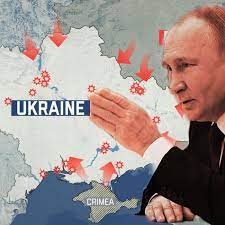
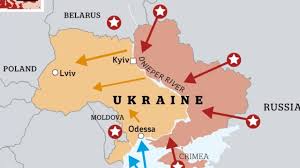


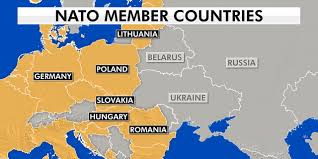
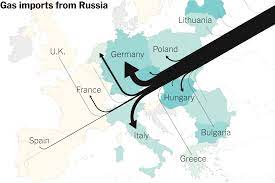

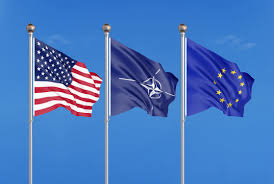
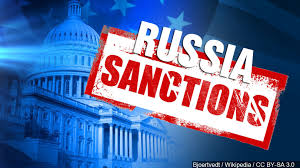


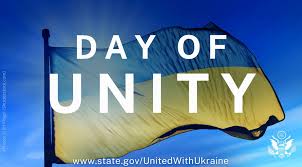







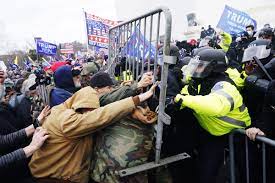















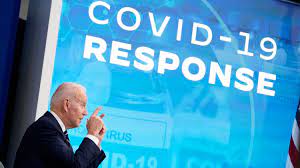



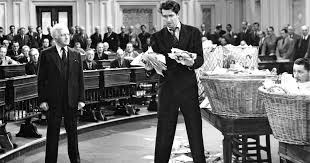







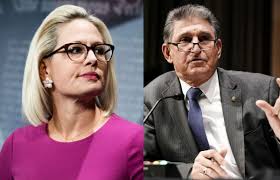






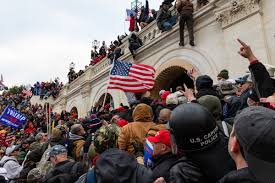
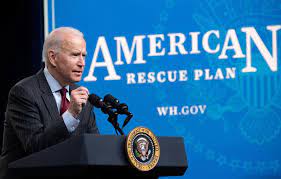











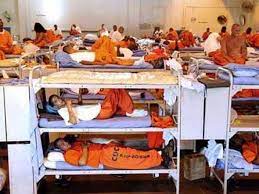


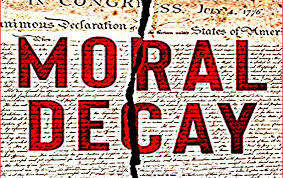
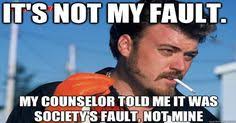













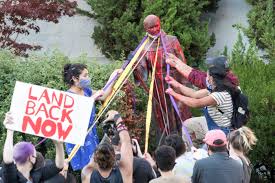









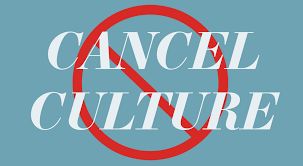
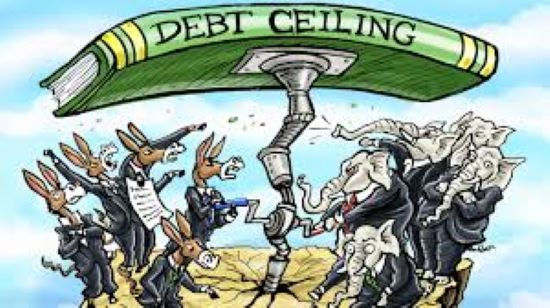

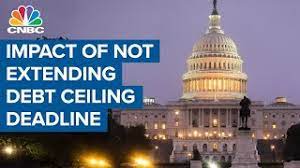


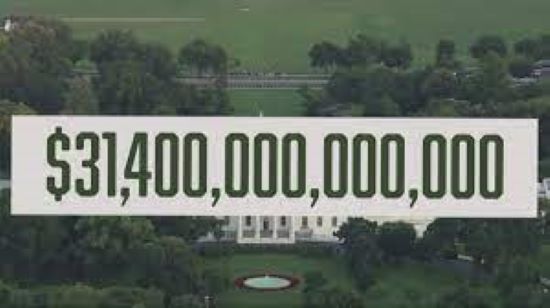
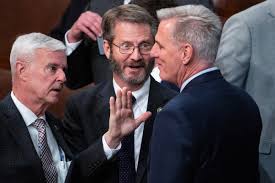








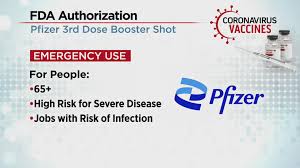

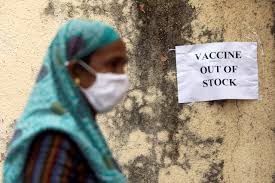






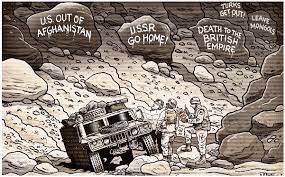







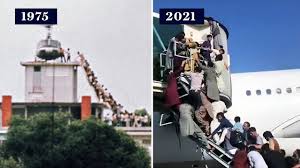



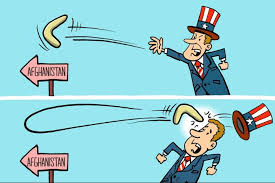



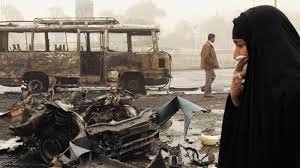











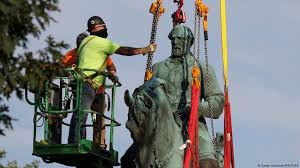
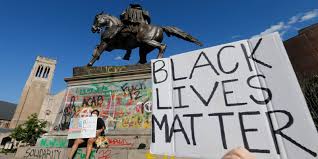








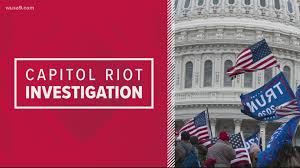
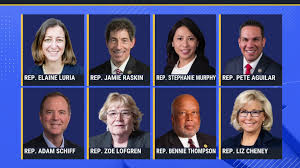
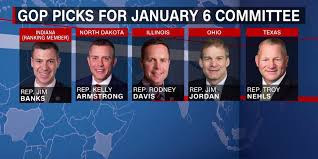
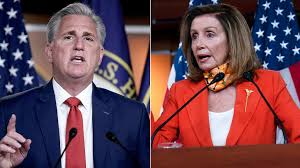
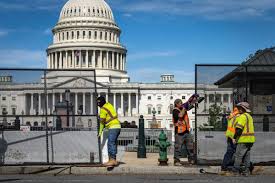


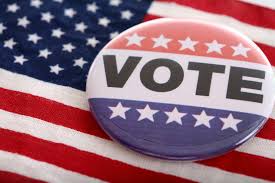





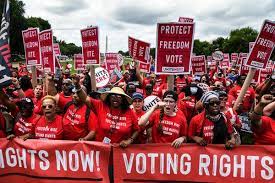




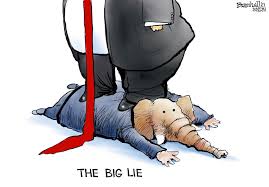

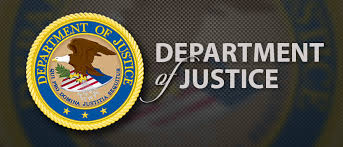




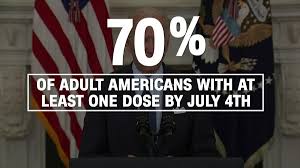


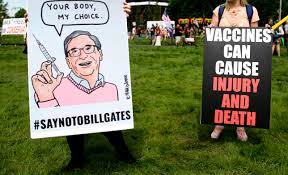









 RSS Feed
RSS Feed